

20 Brilliant Design Case Studies That Neatly Present Brand Identity Concepts
- Articles & Inspiration
- 13 November 2017
21 Comments

Developing a brand identity involves more than just making a logo design. Research into the company’s values is necessary to collect inspiration from which to draw ideas. Concept sketches are then developed into a visual identity that represents the brand, which consists of not just the logomark, but also a complementary colour scheme and typography that provide consistency across the entire brand image. Rather than presenting just the final logo graphic in their portfolios, the designers featured in today’s showcase have produced thorough case studies that completely breakdown their brand designs. See how they neatly present the concept alongside stationery mockups and examples of real life usage.
Vintage Font Bundle Apply 70% Discount Code
Bare Bone Skull Creator Apply 20% Discount Code
Giant Ornament Bundle Over 400 Vector Elements
interastar by Necon

BEUNIT by Ollestudio

Validbox by Motyf Studio

Fortune Step by Sheen Young

BKK Logos by Hidden Characters

Worken Identity by Paola Flores

4Decision by Joy Intermedia

Costella Empreendimentos by Estudio Alice

Wyre Branding by Ramotion

Volusion Brand Identity by Ramotion

Veranda by Marka Network

Annecy by Grapheine

Gaia by Marka Network

Neostalgia by Marka Network

Jalan Surabaya Antique Market

Charly Gusto by Mubien Studio

Palm House by The Seventh Art

Aracely Melendrez Arquitecto by Roberto Melendrez

Extrajet by Alphabet

Origami by Mohammed Mirza

Semet Identity by Mohd Almousa

Subscribe to my newsletter to be the first to hear about new posts
that’s all cool am,azing design process and very talented designer i’ve ever seen.. I hope you to upload tutorial on Youtube about logo process design and brainstorming idea for logo project ? ,. Hope you answer… Thanks :)
Thanks for your feedback/request!
Amazing cases.. Thanks for sharing!!
Glad you liked the examples. Thanks Eduardo
Such amazing talent! Thank you for sharing Chris : )
Thanks for your comment Leandi
They all look fantastic!
Glad you liked the post
Wow! Nice work! I really like it! Keep it up :)
Thank you tauhedul
This goes to show the amount of thought and dedication that is put into designing logos. They’re not just logos but rather the birthchild of a creator.
I like that concept
Amazing, thanks for sharing! I always in a search for something new for my site and sites of my clients
Thanks for your comment Betty
Great examples Chris. The first one, Interastar, reminds me of the E-trade logo.
Glad you liked the examples Michael!
This is one fine article worth bookmarking as a brand design resource. Great designs with fantastic color schemes and top class typography. Thanks a lot for sharing :)
Glad you like the article Davo!
ThanQ for presenting these examples, they helped allot
Ohhh MG you are amazing !! Wonderful, fantastic and beautiful works. Where you studied? Im from Puerto Rico and I did my Master Degree in Pratt institute, my favorite designs are Corporate Identity but a long time I dont work, I really like a lot your Corporate Identity works, my works are junk next to yours. I wich to meet you and see your other works. Continue like that, you’re going to get far away. GOD BLESS YOU.
that is Awesome…! a true brand identity is such like that. This makes your costumes really amazed at your creativity. By the way, who is the mighty designer behind all this,. thanks
Comments are now closed

Join my mailing list and receive a free design resources bundle!
Stay up to date with Spoon Graphics by having new content delivered to your email inbox. As a way to say thanks, you’ll also gain instant access to my free bundle of design resources.
Marketing Research
40 case studies in branding.
[Apple: Innovation and Design as Brand Identity]
[Nike: Building a Global Brand Through Storytelling and Innovation]
[Tesla: Revolutionizing the Automotive Industry Through Innovation and Sustainability]
[Amazon: Transforming Retail and Beyond]
[Zoom: Connecting the World Through Video Communications]
[Beyond Meat: A Plant-Based Revolution]
[TikTok: A Dance with Global Success]
[Coca-Cola: Quenching the World’s Thirst for Over a Century]
[Netflix: Redefining the Future of Entertainment]
[Airbnb: Disrupting the Hospitality Industry]
[Starbucks: Brewing Success Through Innovation and Responsibility]
[The Walt Disney Company: A Kingdom of Creativity and Innovation]
[McDonald’s: Serving Success with a Side of Innovation]
[Dove (Unilever): Crafting Beauty and Confidence]
[IKEA: A Symphony of Design, Affordability, and Sustainability]
[LEGO: Building Blocks of Innovation and Success]
[Slack: Revolutionizing Workplace Communication]
[Patagonia: A Case Study in Sustainable Business Practices]
[Spotify: Transitioning from music sales to subscription streaming]
[Warby Parker: Disrupting the traditional eyewear market with an online-first approach]
[Allbirds: A Case Study in Sustainable Footwear Innovation]
40.1 Apple : Innovation and Design as Brand Identity
- Introduction:
Apple Inc., known for its revolutionary technology and design, has built its brand on innovation and a unique user experience. What began as a garage startup in 1976 has become one of the world’s most valuable companies. Let’s explore how Apple achieved this success.
- Background:
Founding and Early Years: Founded by Steve Jobs, Steve Wozniak, and Ronald Wayne, Apple started as a computer manufacturer. The launch of the Apple I computer in 1976 marked the company’s debut, and the subsequent Apple II became a significant success.
Rise to Prominence: With the introduction of the Macintosh in 1984, Apple emphasized graphical user interface, leading the way in user-friendly computing. The iPod, iPhone, iPad, and MacBook line have since become iconic products.
- Product Development: Regularly updating products to include the latest technology.
- Software Ecosystem: Creating a seamless software environment that ties different Apple products together.
- Aesthetic Appeal: Sleek and modern design across all products.
- User Experience: Emphasizing intuitive interfaces.
- Apple Ecosystem: The interoperability of products encourages customers to stay within the Apple brand.
- Customer Service: Apple’s customer support, including the Genius Bar in Apple Stores, provides personalized service.
- Store Design: Apple Stores are known for their minimalist design and layout.
- In-Store Experience: Offering hands-on experience with products and one-on-one customer service.
- High Pricing Strategy: Apple’s premium pricing limits accessibility for many consumers.
- Dependence on Key Products: A significant reliance on the iPhone, which generates a large portion of revenue.
- Manufacturing Practices: Criticisms regarding working conditions in factories.
- Environmental Concerns: Issues related to recycling and waste management.
- Cultural Impact and Legacy:
Apple’s marketing has not only sold products but also shaped culture.
Think Different Campaign: This campaign emphasized Apple’s image as a company for creative and unconventional thinkers.
Influence on Music Industry: With the iPod and iTunes, Apple changed how people buy and listen to music.
Smartphone Revolution: The iPhone transformed mobile communication.
- Conclusion:
Apple’s brand is more than just a logo; it’s a symbol of innovation, quality, and a unique customer experience. By consistently focusing on design and innovation, Apple has maintained a strong brand identity that resonates with consumers globally. Its success offers essential insights into how a focus on innovation, design, and customer experience can build a powerful and enduring brand. The company’s challenges and criticisms also provide a nuanced understanding of the complexities of operating at the forefront of technology.
- Further Exploration:
Apple’s Advertising: Analyzing various Apple advertising campaigns over the years.
Competitor Analysis: Understanding how Apple’s branding strategies compare with competitors like Samsung, Google, and Microsoft.
Future Outlook: Speculating on Apple’s future in an ever-changing technology landscape.
This extended case study provides a comprehensive view of Apple’s branding, suitable for students who want to delve deeply into branding’s multifaceted nature. It includes various aspects of branding, marketing, challenges, and impact, allowing for a rich understanding of how a brand can shape not only a company’s success but also influence broader culture and industry trends.
40.2 Nike: Building a Global Brand Through Storytelling and Innovation
Nike, Inc. is a household name synonymous with athleticism, performance, and innovation. Through its creative marketing strategies and commitment to design, Nike has become a leader in the sports apparel industry. This case study will explore Nike’s rise to prominence and the branding strategies that have kept it at the forefront of the sports industry.
- Founding and Early Years: Founded as Blue Ribbon Sports in 1964 by Bill Bowerman and Phil Knight, the company changed its name to Nike, Inc. in 1971. The famous swoosh logo and the “Just Do It” slogan became integral parts of the brand’s identity.
- Growth and Expansion: With an initial focus on running shoes, Nike expanded into various sports, including basketball, soccer, and golf, becoming a multi-sport brand.
- Historical Partnerships: Nike’s collaboration with athletes like Michael Jordan led to the creation of the Air Jordan line.
- Global Ambassadors: Associating with top athletes like Serena Williams, Cristiano Ronaldo, and LeBron James.
- Emotional Connection: Creating ads that resonate emotionally with consumers, such as the “Find Your Greatness” campaign.
- Social Commentary: Engaging in cultural conversations, like the Colin Kaepernick campaign.
- Technological Advancements: Such as Nike Air cushioning technology and Flyknit fabric.
- Customization: Allowing consumers to personalize products through the NIKEiD platform.
- Nike Run Clubs: Building a community around the brand through running clubs and apps.
- Sustainability Initiatives: Such as the “Move to Zero” campaign focusing on reducing environmental impact.
- Market Competition: Competition from brands like Adidas and Under Armour.
- Pricing Strategies: Balancing premium pricing with accessibility for a broader audience.
- Labor Practices: Historical criticisms regarding factory working conditions.
- Sustainability Challenges: Managing environmental impacts across the supply chain.
Nike’s influence goes beyond sports apparel.
Influence on Streetwear: Collaborations with designers like Virgil Abloh have made Nike relevant in fashion circles.
Promotion of Women’s Sports: Marketing campaigns focusing on female athletes.
Global Reach: Establishing a presence in various global markets and sports.
Nike’s brand success lies in its ability to intertwine sports, culture, and personal aspiration. Its collaborations with athletes, investment in storytelling, and commitment to innovation have made it a leader in the sports apparel industry. The challenges and criticisms it has faced provide insight into the complexities of maintaining a global brand. Understanding Nike’s branding strategies offers an exciting exploration into how a brand can connect with consumers on multiple levels and across diverse markets.
Analyzing Advertising Campaigns: Students may explore various campaigns to understand how Nike connects with different demographics.
Competitor Analysis: Comparing Nike’s strategies with competitors to understand market dynamics.
Future of Sports Branding: Speculating on the future of branding in the sports industry and how Nike may continue to innovate.
This comprehensive case study provides a deep understanding of Nike’s branding strategies and allows students to appreciate the multifaceted nature of branding in the modern market. The connections between sports, culture, innovation, and marketing weave together to create a compelling story that offers valuable insights for anyone interested in branding, marketing, or the sports industry.
40.3 Tesla: Revolutionizing the Automotive Industry Through Innovation and Sustainability
Tesla, Inc. is not just a car manufacturer; it’s a technology company with a mission to accelerate the world’s transition to sustainable energy. Founded by a group of engineers, including Elon Musk, who became the public face of the company, Tesla has become a symbol of innovation and environmental responsibility. This case study explores how Tesla achieved this status.
- Founding and Early Years: Founded in 2003 by Martin Eberhard and Marc Tarpenning, and later joined by Elon Musk, JB Straubel, and Ian Wright, Tesla started with a vision to create electric cars that didn’t compromise on performance.
- Road to Success: The launch of the Tesla Roadster in 2008 proved that electric cars could be both stylish and powerful. Subsequent models, including the Model S, Model X, Model 3, and Model Y, diversified the product line.
- Autopilot: Developing self-driving technology.
- Battery Technology: Pioneering advancements in battery efficiency and lifespan.
- Clean Energy Products: Including solar panels and the Powerwall for energy storage.
- Sustainable Manufacturing: Efforts to minimize environmental impact in production.
- Online Sales: Bypassing traditional dealerships, selling directly to consumers online.
- Customer Experience: Creating unique showrooms and offering test drives.
- Elon Musk’s Twitter Presence: Utilizing social media to promote and defend the brand.
- Product Launches: Hosting grand events to unveil new products.
- Production Challenges: Meeting demand and managing quality control.
- Market Competition: Growing competition from traditional automakers entering the EV market.
- Labor Practices: Controversies related to factory conditions.
- Autopilot Safety Concerns: Debates over the safety of Tesla’s self-driving technology.
Changing Automotive Industry: Pushing the entire automotive industry towards electric vehicles.
Energy Conversation: Shaping dialogues about renewable energy and climate change.
Stock Market Phenomenon: Tesla’s unique position in the stock market as a technology/automotive company.
Tesla’s brand represents a fusion of technology, sustainability, and luxury. Through innovative products, a focus on environmental responsibility, and disruptive sales models, Tesla has not only built a successful brand but has also changed the landscape of the automotive industry. Analyzing Tesla’s strategies, challenges, and impacts provides valuable insights into how a brand can be a catalyst for industry-wide change.
Comparative Analysis: Understanding how Tesla’s branding strategies differ from traditional automotive brands.
Future of Mobility: Speculating on the future of electric vehicles, autonomous driving, and Tesla’s role in shaping that future.
Global Expansion: Exploring Tesla’s efforts to expand into various global markets, such as China and Europe.
40.4 Amazon: Transforming Retail and Beyond
Amazon, founded by Jeff Bezos in 1994, started as an online bookstore and quickly expanded into a vast e-commerce platform that sells virtually everything. Beyond retail, Amazon has also entered cloud computing, entertainment, and even healthcare. This case study will explore Amazon’s diverse business activities and how they’ve contributed to its colossal success.
- Early Years: Started in a garage, focusing on books, before expanding into other categories.
- Global Expansion: Rapid growth into international markets and diversified product offerings.
- Customer Experience: One-click ordering, personalized recommendations, and fast shipping.
- Amazon Prime: Subscription model offering free shipping, video streaming, and more.
- Amazon Marketplace: Allowing third-party sellers to reach Amazon’s vast customer base.
- Amazon Web Services (AWS): A leading provider of cloud computing services.
- Voice Technology: Introduction of Alexa and Echo smart speakers.
- Amazon Studios: Producing and distributing original content.
- Twitch Acquisition: Engaging the gaming community.
- Whole Foods Acquisition: Entering the brick-and-mortar retail space.
- Amazon Pharmacy: Expanding into the healthcare sector.
- Market Power: Criticisms related to monopolistic practices.
- Tax Practices: Scrutiny over tax strategies and contributions.
- Working Conditions: Concerns over conditions in warehouses and treatment of employees.
- Environmental Impact: Criticisms related to packaging and carbon footprint.
- Changing Retail Landscape: Influencing consumer expectations and competitors’ strategies.
- Innovation Leader: Setting standards in technology, logistics, and customer service.
Amazon’s success story is a testament to innovation, diversification, and relentless focus on customer experience. By continuously expanding into new areas, Amazon has not only transformed retail but also various other industries. Examining Amazon’s strategies, challenges, and cultural impact provides a deep understanding of modern business dynamics and the role of branding in shaping industry landscapes.
Competitive Analysis: Understanding Amazon’s position among global tech giants.
Future Projections: Exploring potential new markets and technologies for Amazon.
Regulatory Landscape: Analyzing potential legal and regulatory challenges.
This extensive case study offers students a multifaceted exploration of one of the world’s most impactful brands. From e-commerce to entertainment, Amazon’s influence is felt across multiple sectors. Understanding its success and challenges provides insights into innovation, strategy, ethics, and the complex dynamics of modern business environments.
40.5 Zoom: Connecting the World Through Video Communications
Zoom Video Communications, known simply as Zoom, played a pivotal role in connecting people during a time of global upheaval. Founded by Eric Yuan in 2011, Zoom quickly rose to prominence as a leading platform for video conferencing, webinars, and collaboration. This case study explores Zoom’s exponential growth, the strategies that propelled it, and the challenges it faced along the way.
- Founding Vision: Eric Yuan, a former Cisco executive, founded Zoom with a mission to make video communication frictionless and reliable.
- Early Growth: Despite entering a competitive market, Zoom differentiated itself through ease of use and robust performance.
- Ease of Use: Simple interface, quick setup, and no user account required for joining meetings.
- Quality and Reliability: Consistent video and audio quality across various devices and internet connections.
- Business and Enterprise Solutions: Offering scalable solutions for organizations of all sizes.
- Education Sector: Customized features for virtual classrooms and administrative meetings.
- Healthcare Integration: Compliance with healthcare regulations for telemedicine use.
- Localization: Tailoring offerings to different regions and languages.
- Strategic Partnerships: Collaborating with hardware vendors and integrators for seamless user experience.
- Free Access for Schools: Providing free access to educational institutions during lockdowns.
- Scaling Infrastructure: Rapidly expanding server capacity to handle surging demand.
- Security Enhancements: Addressing early security concerns with significant updates and transparency.
- “Zoombombing” Incidents: Unwanted intrusions into meetings raised questions about security.
- Data Privacy Concerns: Scrutiny over encryption and data handling practices.
- Competing Platforms: Navigating competition from established players like Microsoft and new entrants like Google.
- Sustaining Growth: Challenges in maintaining growth rates as restrictions lift and in-person meetings resume.
- Changing Work Culture: Enabling remote work, hybrid models, and global collaboration.
- Social Connections: Facilitating social interactions, virtual family gatherings, and online events.
- Redefining Communication: Setting new standards for video communication and online engagement.
Zoom’s journey is a compelling study in understanding customer needs, agile adaptation, and effective scaling. From a startup competing against tech giants to becoming a household name, Zoom’s story offers valuable lessons in innovation, strategic planning, crisis management, and ethical considerations. Analyzing Zoom’s branding, growth strategies, challenges, and cultural impact provides rich insights into the dynamics of technology-driven market disruption and the responsibilities that come with rapid success.
Competitive Landscape Analysis: Understanding Zoom’s position in a fast-evolving market.
Ethical and Regulatory Considerations: Analyzing Zoom’s response to security and privacy concerns.
Long-term Strategy and Sustainability: Evaluating Zoom’s plans to sustain growth and diversify offerings.
40.6 Beyond Meat: A Plant-Based Revolution
Beyond Meat has become a synonym for the plant-based food movement, leading the way in creating meat alternatives that cater to a growing global demand for sustainable and ethical eating. This case study explores the company’s journey, its innovative products, market strategies, and the broader impact on the food industry.
- Founding Vision: Established by Ethan Brown in 2009, Beyond Meat aimed to address environmental, health, and ethical concerns related to animal agriculture.
- Product Innovation: The development of plant-based meat substitutes that mimic the taste, texture, and appearance of traditional meat.
- Not Just for Vegetarians: Positioning products to appeal to meat-eaters looking to reduce meat consumption.
- Retail and Food Service Partnerships: Collaborations with supermarkets, fast-food chains, and restaurants.
- Celebrity Endorsements: Engaging well-known advocates of plant-based diets, such as Bill Gates and Leonardo DiCaprio.
- Sustainability Messaging: Emphasizing the environmental and health benefits of plant-based foods.
- Adaptation to Local Tastes: Developing products tailored to various global markets and cuisines.
- Regulatory Compliance: Navigating complex food regulations in different countries.
- Rising Competitors: Facing competition from both traditional food companies and new entrants in the plant-based sector.
- Product Differentiation: Striving to stand out in an increasingly crowded market.
- Taste and Texture Expectations: Meeting consumer expectations for flavors and textures similar to traditional meat.
- Price Barriers: Addressing price competitiveness with animal-based products.
- Transparency in Ingredients: Providing clear information about ingredients and processing methods.
- Life Cycle Analysis: Assessing the full environmental impact of products, from production to consumption.
- Changing Consumer Habits: Influencing a shift in dietary preferences towards plant-based options.
- Industry Collaboration: Collaborations with traditional meat producers and food service providers.
- Impact on Animal Agriculture: Contributing to debates about the sustainability and ethics of conventional meat production.
Beyond Meat’s story represents a transformative moment in the food industry, reflecting a broader cultural shift towards sustainability and conscious consumption. By analyzing Beyond Meat’s product innovation, market strategies, challenges, and cultural impact, students can gain insights into how a company can both lead and adapt to changing consumer values and industry dynamics. This case encourages critical thinking about innovation, branding, competition, ethics, and the interplay between business and societal needs.
Comparative Analysis with Competitors: Examining strategies and approaches of other players in the plant-based food market.
Consumer Behavior Study: Investigating consumer attitudes towards plant-based alternatives.
Sustainability Assessment: Conducting a comprehensive analysis of the sustainability aspects of plant-based foods.
40.7 TikTok: A Dance with Global Success
TikTok, a social media app developed by Chinese tech company ByteDance, has quickly become a sensation, particularly among younger users. This case study examines TikTok’s rapid growth, innovative content delivery, competition, and the complex regulatory landscape it navigates.
- Launch and Growth: TikTok was launched in 2016 and merged with Musical.ly in 2018 to expand its reach in the U.S. market.
- Algorithm Magic: TikTok’s unique algorithm offers personalized content, leading to higher engagement and user retention.
- Short Video Format: Users create engaging 15-second videos with a wide array of editing tools.
- Personalized Feed: The “For You Page” algorithm provides a customized content feed, enhancing user experience.
- Hashtag Challenges: Promoting user-generated content through viral challenges.
- Collaborations and Duets: Enabling collaboration between users to foster community.
- Music and Dance Focus: Strong emphasis on music and dance-related content.
- Influencer Partnerships: Collaborating with youth influencers to drive adoption.
- Local Content Adaptation: Encouraging content that resonates with local cultures and trends.
- Strategic Advertising: Utilizing in-app advertising and partnerships with brands.
- Data Security Issues: Ongoing debates over data privacy and national security.
- Regulatory Scrutiny: Challenges related to compliance with international regulations.
- Competing for Attention: A battle with platforms like Instagram, Snapchat, and YouTube.
- Intellectual Property Concerns: Issues related to copyright and content ownership.
- Democratizing Content Creation: Empowering individuals to become content creators.
- Cultural Influence: Fostering global cultural exchange and trends.
TikTok’s story is a fascinating example of how a social media platform can become a global phenomenon through innovative technology, strategic targeting, community engagement, and adaptability to local cultures. This case allows students to explore various aspects of social media business, including algorithms, user engagement, competition, regulation, and cultural impact.
Algorithm Analysis: Delve into how TikTok’s algorithm works and compare it with other platforms.
Regulatory Compliance Study: Investigate TikTok’s compliance with different countries’ regulatory frameworks.
Cultural Impact Research: Explore how TikTok influences and reflects cultural trends across the globe.
40.8 Coca-Cola: Quenching the World’s Thirst for Over a Century
Coca-Cola, founded in 1886, has grown to become one of the world’s leading beverage companies. This case study explores Coca-Cola’s brand legacy, marketing innovations, product diversity, sustainability initiatives, and the challenges and opportunities in an ever-changing global beverage market.
- Founding and Early Years: From a pharmacy concoction to a global brand.
- Iconic Advertising Campaigns: A look at some of Coca-Cola’s most memorable marketing efforts.
- Logo and Packaging: The evolution of Coca-Cola’s iconic logo and bottle design.
- Sponsorships and Partnerships: Coca-Cola’s association with sports events, entertainment, and charities.
- Local Market Adaptation: Customizing products and campaigns to fit regional tastes and cultures.
- Digital Engagement: Leveraging social media and technology for customer engagement.
- Beverage Portfolio: Introduction to Coca-Cola’s diverse product line, including soft drinks, water, and juices.
- Health-Conscious Offerings: Response to changing consumer preferences towards healthier options.
- Water Stewardship: Initiatives to reduce water usage and support community water projects.
- Recycling and Packaging: Commitment to reducing plastic waste through recycling and innovative packaging.
- Market Competition: An overview of competitors like PepsiCo and changing consumer tastes.
- Health and Regulatory Scrutiny: Challenges related to sugar content and obesity concerns.
- Emerging Markets: Strategies and challenges in entering and thriving in new markets.
- Economic Sensitivities: How global economic fluctuations affect sales and operations.
Coca-Cola’s story offers an inspiring journey into the world of branding, marketing, innovation, and corporate responsibility. The brand’s ability to adapt, innovate, and remain socially responsible provides valuable insights for anyone interested in business, marketing, and sustainability.
Marketing Analysis: Investigate how Coca-Cola has maintained its brand appeal over time.
Sustainability Evaluation: Examine Coca-Cola’s efforts in promoting environmental stewardship.
Global Business Study: Analyze Coca-Cola’s strategies in adapting to different cultures and markets.
This student version of the Coca-Cola case study serves as an engaging educational resource for courses related to business, marketing, branding, sustainability, and global commerce. Through exploration, discussion, and critical analysis, students can uncover the multifaceted dynamics that have shaped Coca-Cola’s success and its continued relevance in today’s competitive and evolving marketplace. It invites learners to reflect on the power of branding, the importance of innovation, the challenges of global expansion, and the growing significance of corporate social responsibility in modern business.
40.9 Netflix: Redefining the Future of Entertainment
Netflix, founded in 1997, has transformed from a DVD rental service to a global streaming giant. With over 200 million subscribers worldwide, Netflix has redefined the way people consume entertainment. This case study explores Netflix’s growth, innovation, content strategy, and the challenges it faces in a competitive market.
- Founding and Early Growth: From a mail-order DVD service to streaming pioneer.
- Subscription Model: Introduction of the subscription model that revolutionized content consumption.
- Streaming Technology: Development of cutting-edge streaming technology to deliver content seamlessly.
- Personalized Recommendations: Utilization of algorithms to tailor content suggestions to individual viewers.
- Original Content Creation: Investment in exclusive shows and movies to differentiate from competitors.
- Content Licensing: Acquiring rights to popular shows and movies to broaden the content library.
- Localization Strategy: Adapting content to suit diverse cultural tastes and regulatory requirements.
- Emerging Markets Growth: Expanding into developing regions with unique pricing and content strategies.
- Streaming Wars: Competition with other streaming platforms like Amazon Prime, Disney+, and HBO Max.
- Regulatory and Legal Hurdles: Navigating complex international laws and content regulations.
- Content Piracy Concerns: Efforts to combat unauthorized sharing and illegal streaming of content.
Netflix’s story is a testament to innovation, adaptability, and the power of a customer-centric approach. The lessons drawn from Netflix’s success and ongoing challenges provide valuable insights for those interested in technology, media, marketing, and global business strategy.
Technology Analysis: Investigate how Netflix’s technological advancements have shaped its success.
Content Strategy Evaluation: Examine how Netflix’s original content creation has redefined the entertainment industry.
Global Business Study: Analyze Netflix’s strategies for entering and thriving in diverse global markets.
40.10 Airbnb: Disrupting the Hospitality Industry
Airbnb, established in 2008, has emerged as a disruptive force in the global hospitality industry. This platform connects hosts and travelers, providing unique accommodations and experiences. This case study examines Airbnb’s innovation, growth, and the challenges it faces, providing comprehensive insights for students interested in entrepreneurship, technology, law, and global business.
- Founding Story: How an idea to rent air mattresses turned into a revolutionary business concept.
- Peer-to-Peer Model: Airbnb’s model of connecting hosts with travelers and its impact on traditional lodging.
- Platform Design: Exploration of the user-friendly design, including search functionality, booking process, and communication between hosts and guests.
- Trust and Community Building: Methods of establishing trust through reviews, verification processes, host education, community guidelines, and conflict resolution.
- Revenue Model: Understanding Airbnb’s commission-based revenue model, pricing strategies, and value proposition for hosts and guests.
- Global Growth Strategy: Airbnb’s rapid expansion into various cities and countries, including marketing strategies, partnerships, and local engagement.
- Experiences and Diversification: Introduction of Airbnb Experiences, business travel accommodations, and other extensions of the platform.
- Challenges in Scaling: Examination of the obstacles faced during rapid growth, including maintaining quality, customer support, and local adaptation.
- Local Regulations and Compliance: Encounters with legal issues, zoning laws, city ordinances, and ongoing battles with regulators and the traditional hotel industry.
- Impact on Housing Markets: Exploration of criticisms and studies on Airbnb’s effect on local housing prices, availability, gentrification, and neighborhood dynamics.
- Safety and Liability Concerns: Analysis of safety measures, insurance policies, host responsibilities, and incidents that have raised concerns.
- Sustainable Travel Initiatives: Airbnb’s efforts to promote eco-friendly travel practices, partnerships with local communities, and support for responsible hosting.
- Community Outreach and Disaster Response: Airbnb’s involvement in community development and providing emergency accommodations during natural disasters or crises.
- Brand Identity and Positioning: Examination of Airbnb’s brand evolution, advertising campaigns, social media presence, and efforts to differentiate itself from competitors.
- Customer Segmentation and Personalization: Strategies for targeting different customer segments and personalizing the user experience through algorithms and data analysis.
Airbnb’s transformation of the hospitality industry offers an in-depth look into technology-driven disruption, entrepreneurial innovation, community engagement, legal complexities, and social impact. The multifaceted nature of Airbnb’s journey provides a rich context for exploring diverse business concepts.
- Further Exploration and Assignments:
Platform Analysis Project: Students analyze Airbnb’s platform functionality, user experience, and technological innovations.
Regulatory Environment Study: Research and debates on the legal and ethical aspects of Airbnb’s operations in different regions.
Global Strategy Simulation: Group exercise to plan Airbnb’s entry into a new market, considering cultural, legal, and market dynamics.
Social Impact Assessment: Critical evaluation of Airbnb’s social responsibility efforts, community impact, and sustainability initiatives.
40.11 Starbucks: Brewing Success Through Innovation and Responsibility
Starbucks, founded in 1971 in Seattle, Washington, has become a global coffee icon, known for its premium quality coffee, unique store ambiance, and commitment to social responsibility. This case study examines Starbucks’ journey from a single store to an international chain, focusing on its strategic decisions, marketing practices, innovations, and challenges.
- Founding and Early Years: How Starbucks transformed from a single store selling quality coffee beans into a global coffeehouse chain.
- Mission and Vision: An examination of Starbucks’ commitment to inspiring and nurturing the human spirit, one cup at a time.
- Retail Innovation: An exploration of Starbucks’ unique store designs, customer experience, and the introduction of the “third place” concept.
- Product Diversification: Starbucks’ expansion into various products, including specialty beverages, food, packaged products, and even non-coffee items.
- Global Expansion: Strategies and challenges in entering new markets across different continents.
- Brand Building and Positioning: How Starbucks built a strong brand that emphasizes quality, community, and ethical sourcing.
- Loyalty Programs: The impact and success of Starbucks’ rewards program in enhancing customer loyalty and retention.
- Digital Engagement: Utilizing mobile apps, social media, and digital marketing to engage customers.
- Ethical Sourcing: Commitment to sourcing ethically produced coffee through fair trade practices and farmer support.
- Environmental Initiatives: Efforts in reducing waste, conserving energy, and promoting reusable products.
- Community Engagement: Investing in local communities through education, volunteerism, and support for local causes.
- Market Saturation: The challenge of maintaining growth amid increasing competition and market saturation.
- Cultural Sensitivity: Navigating cultural differences in global markets and occasional backlashes.
- Economic Factors: Responding to economic downturns and changes in consumer spending habits.
- Mobile Ordering: Implementing mobile ordering and payment systems to enhance convenience.
- Data Analytics: Leveraging data to personalize marketing and enhance customer experiences.
- Partnerships with Technology Companies: Collaborations to expand reach and offer new products.
Starbucks’ story offers valuable insights into brand building, global expansion, innovation, social responsibility, and resilience in the face of challenges. Its journey from a single store to a global chain showcases the importance of strategic decision-making, adaptability, and commitment to core values.
Supply Chain Analysis: Investigate Starbucks’ complex supply chain and its approach to ensuring quality and ethical practices.
Competitive Landscape Study: Analyze Starbucks’ competitive positioning and the dynamics of the coffeehouse industry.
Crisis Management Review: Examine Starbucks’ response to various challenges and crises over the years.
40.12 The Walt Disney Company: A Kingdom of Creativity and Innovation
The Walt Disney Company, founded in 1923 by Walt and Roy O. Disney, has grown from a small animation studio to a global entertainment conglomerate. This case study delves into Disney’s storied history, business diversification, technological leadership, and strategies that have made it a symbol of creativity and imagination.
- Founding and Early Success: The birth of Mickey Mouse, the creation of the first synchronized sound and full-color cartoons, and the groundbreaking “Snow White and the Seven Dwarfs.”
- Expanding the Magic Kingdom: Disney’s foray into theme parks, beginning with Disneyland in 1955 and followed by a global expansion.
- Diversification: Exploration of Disney’s diversification into various entertainment sectors, including movies, television, theme parks, merchandise, and media networks.
- Content Creation and Distribution: Examination of Disney’s strategies in producing and distributing content through various channels, including streaming services like Disney+.
- Global Expansion: Analysis of Disney’s strategies to enter and thrive in international markets, including China and Europe.
- Brand Building: How Disney built a universally loved brand based on storytelling, characters, and immersive experiences.
- Synergy: Understanding how Disney leverages its characters and stories across multiple business segments.
- Digital Engagement: Exploration of Disney’s digital marketing efforts, social media presence, and engagement with younger audiences.
- Revolutionizing Animation: Disney’s pioneering role in animation technology, including the introduction of CGI.
- Immersive Experiences: The integration of technology in theme parks for personalized and interactive experiences.
- Strategic Acquisitions: Insight into Disney’s acquisitions, including Pixar, Marvel, Lucasfilm, and 21st Century Fox.
- Collaborations and Partnerships: Exploration of Disney’s collaborations with other companies to enhance its product offerings and reach.
- Corporate Social Responsibility (CSR): Disney’s efforts in environmental conservation, community support, and ethical sourcing.
- Content and Cultural Sensitivity: Balancing storytelling with cultural respect and inclusiveness.
- Market Saturation and Competition: Navigating an increasingly competitive media and entertainment landscape.
- Regulatory and Legal Challenges: Adhering to varying regulations across global markets.
- Pandemic Response: Adaptation and response to the COVID-19 pandemic’s impact on various business segments.
The Walt Disney Company’s journey offers a captivating exploration of creativity, innovation, strategic thinking, and adaptability. From pioneering animation to building global theme parks, launching streaming services, and acquiring leading entertainment brands, Disney’s story is a rich lesson in entrepreneurship, marketing, technology, and global business strategies.
Leadership Analysis: Investigate Disney’s leadership strategies and the role of key leaders in shaping the company.
Competitive Landscape Study: Analyze Disney’s competitive positioning and the dynamics of the entertainment industry.
Crisis Management Review: Examine Disney’s response to various challenges, including economic downturns and unexpected crises.
40.13 McDonald’s: Serving Success with a Side of Innovation
McDonald’s is more than just a fast-food chain; it’s a global phenomenon that has shaped the way people eat around the world. Founded in 1940 by Richard and Maurice McDonald, the company has since evolved into a multi-billion-dollar giant with thousands of locations worldwide. This case study examines the key ingredients behind McDonald’s success.
- Founding and Early Growth: A look at McDonald’s beginnings, from a single drive-in to the creation of the Speedee Service System, a precursor to the modern fast-food restaurant.
- Global Expansion: How McDonald’s turned the Golden Arches into an international symbol, adapting to various cultures and tastes.
- Franchising: Exploration of McDonald’s franchising model and how it fueled the company’s rapid growth.
- Menu Innovation: How McDonald’s constantly innovates its menu to meet consumer demands and local preferences.
- Supply Chain Management: Examination of McDonald’s logistical prowess in sourcing and distributing ingredients across the globe.
- Sustainability Efforts: An insight into McDonald’s initiatives to reduce environmental impact and promote sustainable practices.
- Iconic Branding: Understanding how the Golden Arches and characters like Ronald McDonald became global icons.
- Advertising and Promotions: A review of memorable ad campaigns and marketing strategies that resonate with various demographics.
- Customer Experience: How McDonald’s focuses on customer satisfaction through services like McDelivery and the recent digital transformation.
- Digital Ordering and Mobile Apps: Exploration of McDonald’s embrace of technology to enhance customer convenience.
- Smart Restaurants: How technology is changing the in-store experience, from kiosks to AI-powered drive-thrus.
- Health Concerns: Analysis of criticisms regarding the nutritional content of McDonald’s food and the company’s response.
- Labor Practices: Discussion of challenges related to employee wages, benefits, and working conditions.
- Competitive Landscape: Examination of the fast-food market competition and how McDonald’s maintains its edge.
- Adaptation to Changing Consumer Preferences: The shift towards healthier options and how McDonald’s is responding.
- Investments in Technology: Future technological innovations that may shape the McDonald’s experience.
- Sustainability Goals: Long-term objectives in minimizing environmental impact and promoting social responsibility.
McDonald’s journey offers a multifaceted case study in entrepreneurship, innovation, marketing, global expansion, and adaptability. From flipping burgers in a single location to flipping the script on fast food worldwide, the company continues to evolve, facing new challenges and seizing opportunities.
40.14 Dove (Unilever): Crafting Beauty and Confidence
Dove, a personal care brand owned by Unilever, has become synonymous with beauty and self-esteem through its innovative products and socially conscious campaigns. This case study invites you to explore Dove’s journey and its commitment to promoting a more inclusive and positive depiction of beauty.
- Dove’s Inception: A look at the brand’s origins in 1957 with the launch of the Dove Beauty Bar.
- Product Portfolio: Overview of Dove’s wide range of personal care products, including body wash, hair care, and skincare.
- The “Real Beauty” Campaign: Examination of Dove’s groundbreaking campaign that challenged conventional beauty standards.
- Customer Engagement: Insights into Dove’s interaction with customers through social media, events, and community outreach.
- Global Expansion: Strategies behind Dove’s growth into various international markets and adaptation to different cultures.
- Research and Development: A look at how Dove constantly innovates its product line through scientific research and consumer insights.
- Sustainability Initiatives: Understanding Dove’s efforts in reducing environmental impact and promoting ethical sourcing.
- Promoting Self-Esteem: Analysis of Dove’s initiatives to enhance self-esteem, particularly among young women, through education and advertising.
- Partnerships and Collaborations: How Dove collaborates with NGOs, influencers, and other stakeholders to amplify social messages.
- Market Competition: Assessment of the competitive landscape and how Dove differentiates itself.
- Advertising Backlash: Discussion of certain advertising missteps and how the brand managed the fallout.
- Trend Adaptation: Exploration of how Dove aligns with emerging beauty and wellness trends.
- Technology Integration: How Dove leverages technology, including AI and data analytics, for product development and personalized experiences.
- Sustainability Goals: Examination of Dove’s long-term commitment to environmental sustainability and ethical practices.
Dove’s journey presents an engaging case study that goes beyond products and marketing to encompass social values, consumer connection, innovation, and global reach. The brand’s commitment to challenging beauty norms and promoting self-esteem has set it apart in a crowded market.
40.15 IKEA: A Symphony of Design, Affordability, and Sustainability
- Founding and Mission: Founded in Sweden in 1943 by Ingvar Kamprad, IKEA’s mission is to “create a better everyday life for many people.” It emphasizes affordability, design, and functionality.
- Overview of Offerings: IKEA offers a wide range of home furnishings, including furniture, kitchen appliances, decor, and accessories.
- Global Presence: With over 400 stores in 50 countries, IKEA has become a global leader in the home furnishing industry.
- Product Design and Development: IKEA’s products are known for minimalist design, functionality, and ease of assembly. Collaboration with designers worldwide keeps its offerings fresh and innovative.
- Supply Chain and Manufacturing: A well-integrated supply chain with close relationships to over 1,000 suppliers allows IKEA to maintain low costs while ensuring quality and sustainability.
- Retail Experience: The IKEA in-store experience is distinctive with showrooms, self-service warehouses, and in-store restaurants offering Swedish cuisine.
- Pricing Strategy: IKEA’s cost-conscious approach means designing products from the price tag up, ensuring affordability without compromising on quality.
- Digitalization and E-commerce: With a strong online presence, IKEA provides customers with online shopping options, planning tools, and virtual product previews.
- Advertising Campaigns: IKEA uses creative and often humorous advertising to appeal to a broad customer base, focusing on life improvement and solutions.
- Online Engagement: Digital catalogs, apps, and social media keep IKEA’s audience engaged and provide valuable customer insights.
- In-store Promotions: Seasonal displays and in-store events promote new products and encourage customer interaction.
- Brand Identity and Values: IKEA’s brand emphasizes sustainability, inclusiveness, and accessibility.
- Environmental Practices: Commitment to sustainable sourcing, waste reduction, and energy efficiency are core to IKEA’s operations.
- Renewable Energy Projects: IKEA invests in wind and solar energy, aiming to produce as much renewable energy as it consumes in its operations by 2030.
- Social Responsibility: The IKEA Foundation supports initiatives related to children’s education, refugee support, and climate change.
- Sustainable Product Lines: IKEA offers products that promote sustainable living, from energy-efficient appliances to recycled materials.
- Cultural Adaptation: IKEA adapts its product lines and marketing to reflect local tastes, customs, and living conditions.
- Market Entry Strategies: IKEA studies each market carefully, adapting its store format and product selection to local needs.
- Challenges in Different Markets: Navigating regulations, cultural differences, and local competition has posed challenges in some markets.
- Competition and Market Pressures: IKEA faces competition from both traditional furniture stores and online platforms.
- Cultural Missteps: Some global marketing campaigns have been criticized for insensitivity to local cultures.
- Quality Concerns: IKEA’s emphasis on low cost has sometimes led to perceived quality issues.
- Emerging Markets: Expansion into new markets like India and South America presents opportunities and challenges.
- Technological Innovations: IKEA is exploring augmented reality, artificial intelligence, and smart home technologies.
- Sustainability Goals: Commitment to further sustainability through its entire value chain.
- Collaborations and Partnerships: IKEA’s collaboration with designers, tech companies, and even other retailers fuels innovation.
IKEA’s unique blend of design, affordability, sustainability, and global reach has made it a standout brand in the home furnishing industry. The company’s multifaceted approach offers a rich study of modern retail, branding, international business, and corporate responsibility. The complexities and successes of IKEA’s model provide invaluable insights and inspiration for students across various disciplines.
40.16 LEGO: Building Blocks of Innovation and Success
- Founding and History: LEGO was founded in 1932 by Ole Kirk Christiansen in Billund, Denmark. The LEGO brick, as we know it today, was launched in 1958.
- Product Portfolio: Beyond the iconic bricks, LEGO’s products include themed sets, video games, movies, and educational tools.
- Mission and Values: LEGO’s mission is to “Inspire and develop the builders of tomorrow” through creative play and learning.
- Innovation in Design: LEGO constantly innovates its product line, incorporating new themes and licensed partnerships (e.g., Star Wars, Marvel).
- Quality and Precision: The manufacturing process emphasizes precision and quality, ensuring compatibility across generations of LEGO bricks.
- Digital Expansion: LEGO has embraced digital gaming and augmented reality experiences, extending the brand into the digital realm.
- Brand Building: LEGO’s brand revolves around creativity, imagination, learning, and fun.
- Advertising and Promotion: Utilizing various channels, LEGO engages customers through inventive advertising campaigns and social media.
- Community Engagement: LEGO Ideas invites fans to submit and vote on new product ideas. The LEGO community is actively engaged in product development, events, and online forums.
- Retail Experience: LEGO stores offer hands-on experiences with play areas, workshops, and exclusive products.
- Online Shopping: The online store provides an extensive product selection, customization options, and exclusive membership benefits.
- Global Distribution: LEGO products are available in more than 140 countries through various retail channels.
- LEGO Education: Through LEGO Education, the company offers learning solutions that encourage hands-on, playful learning in schools.
- Charitable Activities: The LEGO Foundation supports children’s development and learning through various global initiatives.
- Environmental Sustainability: LEGO is committed to reducing its environmental impact, including the goal to produce all products and packaging with sustainable materials by 2030.
- Market Pressures: Facing competition from both traditional toys and digital games, LEGO has had to continuously innovate and adapt.
- Intellectual Property Issues: LEGO has faced legal challenges around patents and copyrights, particularly concerning the design of its bricks.
- Economic Fluctuations: Economic downturns and shifts in consumer behavior have influenced LEGO’s sales and growth strategies.
- Adaptation to Local Markets: LEGO tailors its marketing and product strategies to different cultures and consumer preferences.
- Challenges in Emerging Markets: Entering new markets such as China has presented both opportunities and challenges, including issues related to counterfeiting.
- Technological Innovation: LEGO continues to explore new technologies, such as 3D printing and artificial intelligence.
- Collaborations and Licensing: Partnerships with entertainment franchises and designers fuel creativity and market reach.
- Focus on Adult Fans: LEGO has been expanding its appeal to adult fans through complex sets and themes that cater to various interests.
LEGO’s journey from a small carpentry shop to a global brand is a study in innovation, adaptability, community engagement, and brand stewardship. Its commitment to quality, creativity, and social responsibility offers a multifaceted case study with insights into product development, marketing, sustainability, global business strategy, and more. The story of LEGO inspires aspiring entrepreneurs, marketers, designers, and leaders to think creatively and act with purpose and integrity.
40.17 Slack: Revolutionizing Workplace Communication
- Founding and Background: Launched in 2013 by Stewart Butterfield, Eric Costello, Cal Henderson, and Serguei Mourachov, Slack has quickly become one of the leading tools for team communication.
- Business Model: Slack offers a freemium model where basic features are free, with paid plans for more functionality.
- Key Features: Slack provides channels, direct messaging, file sharing, integrations with other tools, and more to enhance team communication.
- Innovation and Updates: Continual updates and feature enhancements have kept Slack at the forefront of workplace communication tools.
- User-Centric Design: Slack’s interface is designed for ease of use and collaboration, reducing email overload.
- Target Audience: Primarily targeting businesses, both small and large, Slack has also found usage in communities and other groups.
- Growth Strategies: Referral programs, partnerships, and effective content marketing have contributed to Slack’s rapid adoption.
- Customer Engagement: Slack has utilized community engagement, feedback, and customer support to foster loyalty and improve its product.
- Competitors: Major competitors include Microsoft Teams, Zoom, and others offering communication and collaboration tools.
- Differentiation: Slack’s integrations, customization, and user experience have been key differentiators.
- Security Concerns: As with many digital platforms, security and privacy have been challenges, and Slack has implemented measures to ensure data protection.
- Freemium to Premium: The free version attracts users, while additional features and support drive customers to paid plans.
- Enterprise Solutions: Slack’s Enterprise Grid offers solutions tailored to large organizations, including advanced security and administrative features.
- Localization and Cultural Adaptation: Slack has localized its product for various markets and cultures to drive global adoption.
- Challenges in Emerging Markets: Issues such as local compliance, competition, and connectivity can present challenges in various regions.
- Pandemic Response: The shift to remote work during the COVID-19 pandemic led to a surge in Slack usage, adapting to new work patterns.
- Long-term Trends: Remote and hybrid work trends may shape Slack’s future development and market positioning.
- Strategic Acquisitions: Acquiring companies like Rimeto added capabilities to Slack’s portfolio.
- Partnerships: Collaborations with companies like Google, Salesforce, and others have extended Slack’s functionality.
- Salesforce Acquisition: The pending acquisition by Salesforce as of the cut-off knowledge date may significantly shape Slack’s future direction.
- Continued Innovation: Slack continues to explore new features, integrations, and market opportunities.
Slack’s story offers insights into the fast-paced world of technology startups, product development, global expansion, and market competition. Its response to changing work patterns and its strategic acquisitions and partnerships make it a rich subject for study. The lessons from Slack’s journey are relevant to aspiring entrepreneurs, product managers, marketers, and others interested in technology, innovation, and the future of work.
40.18 Patagonia: A Case Study in Sustainable Business Practices
- Background: Patagonia, founded in 1973 by Yvon Chouinard, is an outdoor clothing and gear retailer known for its commitment to environmental sustainability.
- Mission: “Build the best product, cause no unnecessary harm, use business to inspire and implement solutions to the environmental crisis.”
- Innovation: Patagonia has been a leader in developing sustainable fabrics and materials.
- Quality & Durability: Emphasizing long-lasting products to reduce consumerism.
- Recycling & Repairing: Offering repair services and encouraging recycling of products through programs like “Worn Wear.”
- Transparency: Publicly sharing supply chain information and environmental impacts.
- Activism Marketing: Taking strong stances on environmental and social issues.
- Community Engagement: Collaborating with NGOs and community organizations.
- Supply Chain: Focusing on ethical production, fair labor practices, and organic materials.
- Environmental Activism: Regularly donating to environmental causes and supporting conservation efforts.
- B Corp Certification: Patagonia is a certified B Corporation, aligning profit with purpose.
- Profit vs. Purpose: Balancing strong financial growth with a commitment to environmental and social responsibility.
- Investing in Sustainability: Reinvesting profits in sustainable initiatives and environmental causes.
- Market Competition: Navigating a competitive market while maintaining ethical standards.
- Scale and Growth: Balancing growth and scalability with sustainability commitments.
- Greenwashing Accusations: Managing perceptions and criticisms related to authenticity and impact.
- International Expansion: Adapting sustainable practices across diverse markets and cultures.
- Global Partnerships: Collaborating with global organizations to expand environmental initiatives.
- Employee Engagement: Fostering a workplace culture that aligns with company values.
- Leadership and Governance: Maintaining leadership that embodies the brand’s ethos.
- Influencing Other Brands: Patagonia’s practices have influenced other companies to consider sustainability.
- Industry Collaboration: Working with competitors on common goals such as responsible sourcing.
- Adaptation to Climate Change: Developing strategies to mitigate and adapt to the impacts of climate change.
- New Market Opportunities: Exploring new product lines and markets while adhering to core values.
Patagonia serves as a compelling example of a company that has successfully integrated sustainability, ethical considerations, and environmental activism into every aspect of its business. From innovative product development to bold marketing strategies and influential industry leadership, Patagonia’s case study offers valuable insights for those interested in business ethics, environmental stewardship, social entrepreneurship, and innovative brand management. The brand’s ongoing challenges and successes provide rich material for analysis and reflection on the future of sustainable business practices.
40.19 Spotify: Transitioning from music sales to subscription streaming
- Background: Spotify, founded in 2006 by Daniel Ek and Martin Lorentzon, transformed the way people access and enjoy music.
- Mission: “To unlock the potential of human creativity—by giving a million creative artists the opportunity to live off their art and billions of fans the opportunity to enjoy and be inspired by it.”
- Streaming Model: Spotify’s on-demand streaming model allows users to access millions of songs and podcasts.
- Algorithm & Personalization: The use of algorithms to create personalized playlists and recommendations.
- Freemium Model: Free, ad-supported tier alongside premium subscriptions.
- Revenue Streams: Subscriptions, advertising, and partnerships.
- User Engagement: Innovative playlists like “Discover Weekly” engage users.
- Collaborations: Partnerships with artists, labels, and other brands.
- International Reach: Spotify has expanded to numerous countries, adapting to various markets and regulations.
- Localized Content: Offering content that resonates with local cultures and tastes.
- Market Competitors: Facing competitors like Apple Music, Amazon Music, and YouTube Music.
- Royalty Disputes: Navigating complex relationships with labels, artists, and rights holders.
- Environmental Footprint: Efforts to reduce carbon footprint and promote sustainable practices.
- Supporting Artists: Initiatives to support emerging artists and creatives.
- New Features: Continual innovation in features and user experience.
- Podcasts and Original Content: Investing in podcasts and original content to diversify offerings.
- Technology Investments: Exploring technologies like AI to enhance user experience.
- Changing Consumer Behavior: Transforming the way people consume and interact with music.
- Influence on the Music Industry: Affecting record labels, artists, and music distribution.
Spotify’s rise as a leading music streaming platform offers a multifaceted case study encompassing technology innovation, marketing strategies, global expansion, and industry impact. From navigating complex licensing agreements to crafting personalized user experiences, Spotify’s journey provides valuable insights into digital transformation, competitive strategy, customer engagement, and the future of entertainment. It serves as a valuable example for understanding modern business dynamics in the digital age, including the ongoing challenges and opportunities of operating in a rapidly evolving industry.
40.20 Warby Parker: Disrupting the traditional eyewear market with an online-first approach
- Background: Founded in 2010, Warby Parker aimed to offer designer eyewear at a fraction of the price through a direct-to-consumer model.
- Mission: “To offer designer eyewear at a revolutionary price, while leading the way for socially conscious businesses.”
- Design: In-house design leading to unique and affordable eyewear.
- Home Try-On: A free program allowing customers to try on glasses at home before purchasing.
- Direct-to-Consumer: Selling directly to customers through e-commerce and physical stores, cutting out intermediaries.
- Social Responsibility: “Buy a Pair, Give a Pair” program donates glasses to those in need.
- Digital Marketing: Effective use of social media and content marketing.
- Community Engagement: Building brand loyalty through community events and collaborations.
- Physical Stores: Combining e-commerce with brick-and-mortar stores for an omnichannel experience.
- International Growth: Expanding to Canada and other markets, adapting to local regulations and preferences.
- Traditional Competitors: Competition with traditional eyewear brands and retailers.
- Copycat Brands: Managing competition from similar direct-to-consumer eyewear startups.
- Environmentally Conscious Manufacturing: Commitment to using sustainable materials.
- Carbon Neutrality: Efforts to reduce and offset carbon emissions.
- Virtual Try-On: Use of augmented reality for virtual try-ons via mobile app.
- Telehealth Services: Offering eye exams and prescriptions through telehealth technology.
- Disrupting Traditional Retail: Changing the way people shop for glasses.
- Promoting Social Responsibility: Encouraging other brands to adopt socially responsible practices.
Warby Parker’s innovative approach to eyewear retail has not only disrupted traditional industry practices but also set new standards in customer experience, social responsibility, and sustainability. Through its unique business model, commitment to social causes, and use of technology, Warby Parker has carved out a unique position in the market. The case study of Warby Parker offers valuable insights into how innovative thinking, customer-centric approaches, and ethical business practices can create a strong brand identity and successful business in today’s competitive retail landscape. It’s an exemplary story for understanding modern entrepreneurship, retail strategies, marketing, and social entrepreneurship.
40.21 Allbirds: A Case Study in Sustainable Footwear Innovation
- Background: Allbirds, founded in 2016 by Tim Brown and Joey Zwillinger, aimed to create comfortable and sustainable footwear.
- Mission: “To tread lighter on the planet while making better things people love to wear.”
- Sustainable Materials: Allbirds uses renewable materials like merino wool and eucalyptus fiber.
- Comfort and Design: Combining sustainable materials with comfortable and aesthetically appealing design.
- Direct-to-Consumer: Selling directly to customers to reduce costs and improve accessibility.
- Ethical Sourcing: Ensuring the ethical treatment of animals and workers in the supply chain.
- Storytelling: Emphasizing the brand’s commitment to sustainability and innovative materials.
- Word-of-Mouth: Leveraging satisfied customers as brand advocates.
- International Presence: Expanding into international markets while staying true to the brand’s values.
- Localized Initiatives: Tailoring products and marketing to suit local preferences.
- Market Competitors: Competing with established footwear brands and other sustainable startups.
- Scale and Sustainability: Balancing growth with maintaining eco-friendly practices.
- Carbon Footprint: Measuring and reducing the brand’s carbon footprint.
- Circular Economy: Exploring ways to make footwear more recyclable and sustainable.
- Transparency: Sharing information about the supply chain and material sources.
- Community Engagement: Partnering with organizations for social and environmental causes.
- Research and Development: Continuing to innovate with new materials and product lines.
- Market Expansion: Exploring new markets and consumer segments.
- Changing Consumer Behavior: Influencing the way consumers think about sustainable products.
- Inspiring Competitors: Encouraging other brands to prioritize sustainability.
Allbirds’ unique approach to footwear production, blending innovation, comfort, and sustainability, has positioned it as a leader in the sustainable fashion movement. The Allbirds case study provides a valuable window into the world of sustainable business, marketing, and product innovation. By exploring Allbirds’ strategies and challenges, students can gain insights into how a commitment to ethical practices, environmental consciousness, and customer satisfaction can drive success in today’s competitive market. The case offers lessons for those interested in entrepreneurship, sustainable business practices, and ethical consumerism.
- Product Designers
- Web Designers
- Social Media Designers
- Drawing Designers
- UI Designers
- UX Designers
- Mobile App Designers
- Digital Product Designers
30 Days of Design: A Branding Case Study
We’ve all picked up design projects that required us to deliver outstanding results under severe time constraints. This branding case study breaks down the process of how to accomplish it effectively.
By Ivona Petrovic
Ivona specializes in all facets of web, from UX/UI to branding and illustration. She values learning and transparent communication.
PREVIOUSLY AT
There are several important aspects to be aware of when working with clients—meeting expectations and deadlines are two of them. At some stage in every designer’s career, there will come along a client who has a pressing urgency with their project. These are the projects that teach the art of meeting deadlines and how crazy it can get.
There are typically two types of projects that every designer will encounter during their career: “I need a user-centered design that corresponds with my project, no strict deadlines; I just want the best solution”… That’s every designer’s dream. But let’s face it; in reality, things are always more challenging.
“I want an outside the box, innovative, and creative solution—good UX, really nice user interface… and I need it yesterday.”
So what happens when you realize there are 30 days to create a logo and design the main brand elements, a website, mobile UIs, and social media adverts/graphics?
After having a small panic attack, you realize that working smart is the only way to go.
Making a plan and thinking things through beforehand will help with productivity, precision, and design quality. As with any successful endeavor, hard work and long hours are some of the mandatory conditions for making it happen.
No matter what, there are always these excruciating questions:
- Is it worth doing with such time restraints?
- Will time constraints lead to poor design quality?
- Would I do a better job if I had more time?
Absolutely yes!
As with any project, there are always upsides, downsides, and constraints that, as designers, we must find a way around and even use to our advantage to come up with creative solutions.
Having a clear idea of the tasks that need to be fulfilled for a successful completion of the project is key, as well as diplomatically letting the client know that the short timeline could potentially negatively impact the design quality overall. However, the pressure of a crushing deadline is no excuse for not putting your best towards your craft—use it to push yourself to deliver the best work possible. A study done by Harvard Business School on creative work done under time pressure concluded this:
This study suggests that managers take steps to protect time for employees to engage in creative cognitive processing, particularly those employees whose work calls for a high degree of creativity. […] It is entirely likely that creative ideas will not often be produced in the complete absence of any time pressure whatsoever, either self-imposed or externally-imposed.
These findings indicate that a great degree of pressure may work against creative work, yet at the same time, the study also suggests that a reasonable level of pressure regarding creative work may be useful in helping to produce better designs .
It’s always a challenge to get everything done when you are working as a freelancer with multiple active projects, but it is a great opportunity to be diligent with your schedule and make your limited time work for you! Making remote working work for you is simple, yet not easy. Combine this with a solid plan, and you’ve got yourself a recipe for success.
Days 1-2: First Things First—Plan!
The first step is to break the project down into smaller parts and calculate how much time it will take to finish each stage of the project. Setting goals increases motivation and achievement. The science of goal achievement recommends breaking down your big goal into clear, defined action-steps—doing this will give you a great advantage in your efforts toward achieving it.
Concerning branding design, a good practice is to create several versions of the design so the client has different options to choose from. My personal preference is to create three iterations of logo designs and main brand elements such as typography, color palettes, imagery, and icon sets. Doing this first will allow you to take the concept and visual ideas to the next step.
Create work processes and follow them.
Creating work processes will ease the workflow and the responsibility that comes with every project. The following is my usual approach for a typical design project, be it branding or user interface design:
Find out everything about your client’s business:
- What is the core of their business and what is their main activity?
- Who is their target audience and what are their needs?
- What are their goals and what problem needs to be solved using design?
- Who is the competition and how you can be better?
A questionnaire or design brief is one of the most convenient and efficient ways of collecting the aforementioned information.
Create a Mood Board
One of the things you can use a mood board for is to create the concept—an essential part of any project. Get the bigger picture—take all your research and put it on one big canvas so you can see all the elements that should be incorporated into the designs. There are several free tools that help you create mood boards easily.
If you are not into online tools, using Adobe Illustrator works well as you can create, add, and freely move elements. Think of it as a collage—don’t worry too much about the positioning of the details; you are free to arrange everything to your liking. The primary goal is to see how colors, photos, icons, typography, etc. work with each other—visually and in storytelling.
Day 3: Create a Design Concept
Creating a concept is the next step after completing your mood board and is the foundation of all your future work. A concept is produced as an experimental model to test the viability of design features.
The mood board will be helpful in setting an early visual direction which should correspond to the audience you’re targeting and the aims of the business. The concept will be the basis of your UX direction and is, therefore, a part of the 10 UX Deliverables top designers use .
It’s important to appreciate how important this step is because a solid concept helps in retelling a compelling story , even during the first stages of the project. The main focus should take into account the feelings and experiences users encounter when dealing with the visuals rather than what the visuals themselves are.
One of the industry’s most influential marketing consultants and motivational speakers, Simon Sinek, gave a brilliant TED talk on this subject.
The mood board can help you create a few short slogans or maybe set icon and photo styles into a concept. Since it’s good to have typography that can be read quickly regardless of the medium, it’s also important to consider web and print friendly typography . This is a key element of great design and is also one of the principles regarded by universal design practices .
Day 4: Design Brand Visuals
The brand building process can become tedious and time-consuming if you are caught following the wrong approach from the beginning. Getting started by creating logo iterations is best done once you have an approved concept, and the visual guidance files are done. This will give you the confidence that you are moving in the right direction, and allow you to tackle the branding challenges in a smart and time-efficient way.
It’s essential to make small pen and paper sketches of your design ideas. It will take less time if you sketch first, and then proceed to Illustrator, Sketch, etc. to work on your logo. This step has helped me design three different logo proposals that are all in the visual direction chosen for the brand. This took a few days to finish:

There may be some additional changes and tweaks to the logo design, but once the client has decided on the logo and approved other elements like colors, typography, icons, and photography style, you are done with the basic branding elements.
Days 7-15: Website Design
Brand development includes more than just the logotype—it covers nearly all aspects of design, including the website. Getting started with the website first can be useful, since you can add to the visual concept by applying visual rules and seeing how they work together. This is particularly so when you are creating a website that ultimately has a similar objective and elements to the mobile application.
A sitemap is a list of pages of a website that is accessible to crawlers or users. It can be either a document that is used as a planning tool for web design or a page that showcases the pages of a website in a hierarchical manner.
It’s a big help if a client already has a sitemap because it gives you a clear view of all the pages that belong to a website. If you are awarded a project where a sitemap is needed, you will have to work with the client to put one together.
This could mean asking your client a few questions:
- What is the number of pages on the website?
- What pages are the most important ones?
- Are there any subpages?
This will paint a clear picture of the website’s structure and give you a good idea of the project’s scope.
I find it useful to ask the client up front to give me all the copy and content that he/she wants to include on the site. It’s a best practice to make the design work around the copy rather than create the UI first and try to make the copy fit afterward.
The copy first approach saves you and the developers a lot of time. If you go the other way around, you could encounter problems. While useful at times, using dummy text can impact a real project negatively, especially when the design relies heavily on typography and is designed around content. A copy-centric design has no downside and only helps in putting out creative work of exceptional quality.
Homepage Design
By following all the previous steps, you already have general visual guidelines, a sitemap, and copy. Now you can go on to designing the pages for the website.
The homepage is the first thing users see when they come to a website, and therefore, it’s the most important page. Applying the Pareto principle demonstrates that the homepage holds 80% of the design direction (context, typography, colors, repeatable elements, etc.) and the rest of the pages 20%.
It’s good idea to begin your process by grouping and selecting sections for the homepage. Full content and copy usually help me organize the whole page and see which aspects are missing as well as the sections that could be added to maximize the impact and drive users to buy/use the product or service.

To emphasize the service or product, try using prominent call to action sections. They are an excellent way to advertise as well as capture the attention of the users to buy a product, subscribe to a newsletter, sign up, etc.
If the technology, target audience, and the client’s type of business allows, adding motion design like GIF or animation can give the whole site subcontext as well as emphasize the call to action section. However, designers should be careful not to go too far and create something that will take a lot of time to develop.
Days 15-25: Apply Universal Design
Universal design , as described by its developers, “may be applied to evaluate existing designs, guide the design process and educate both designers and consumers about the characteristics of more usable products and environments.”
The concept of universal design is one of the most optimal solutions to use when dealing with a large scope project—a unified concept and focused visual direction for branding, website and mobile applications is of great benefit when designing under time constraints.
The necessity of repetitive elements can be a challenge in itself. This happens when you encounter technical requirements. Responsive website and mobile platforms have a completely different philosophy and set of rules and, therefore, can become a problem if not tackled appropriately. Nevertheless, creating elements that can be used across multiple platforms is one of the backbones of any project’s success—in this particular circumstance, it would not have been possible to cover so many platforms/devices without a unified design that clearly sets the direction for brand development.
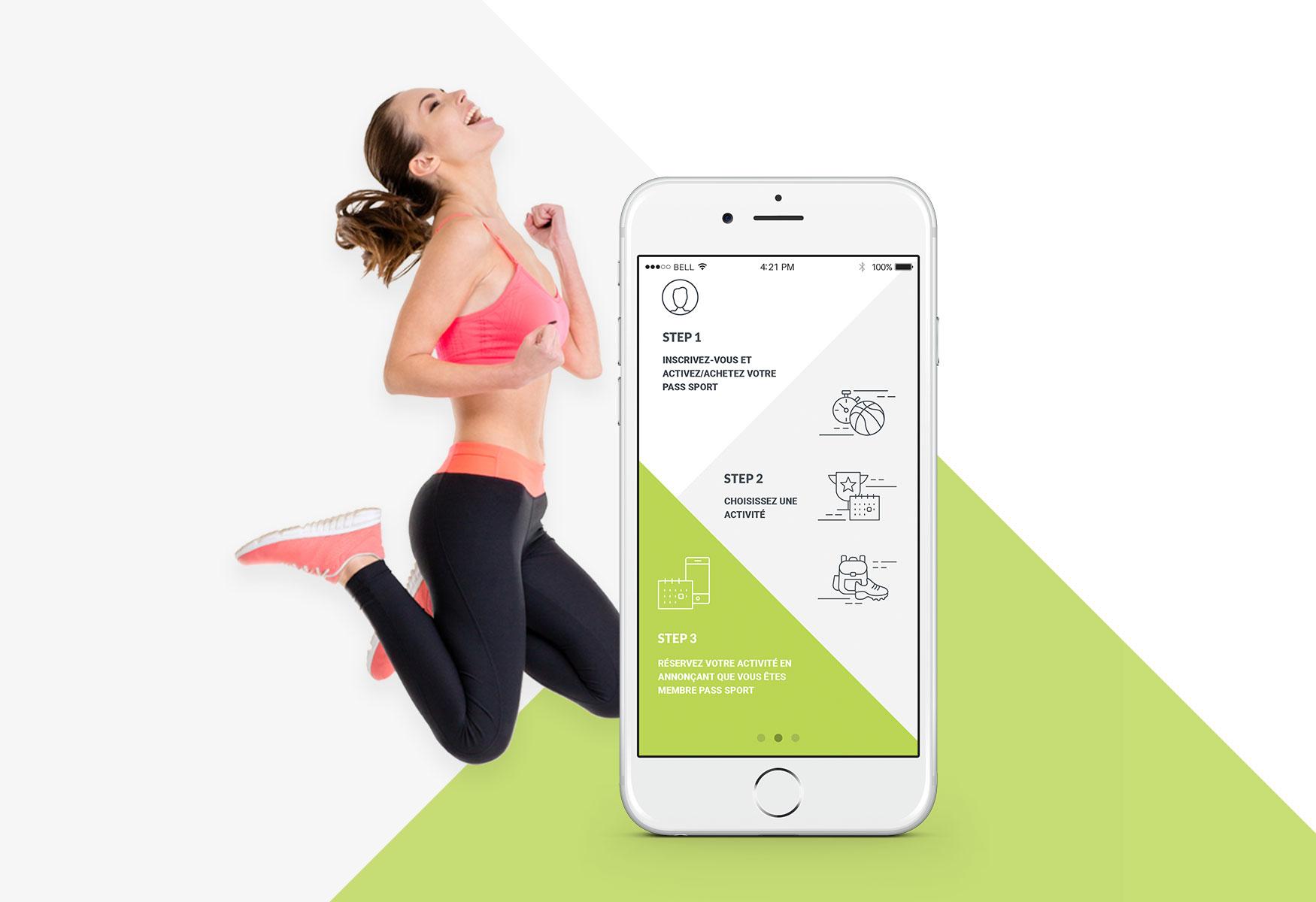
The downside of a tight deadline and designing for multiple platforms is that you may not be using the full potential of each of the platforms you are designing for. In such cases, because of the time constraint, a simple “bulletproof” solution that is familiar to the user base could be a valuable idea.
For example: Re-apply one idea on multiple pages and remodel it for every device. The patterns are similar in essence, which is in your favor. It could be in the way you display essential information or invite users to buy a product. In this case, even a search bar could be similar if not the same.
Designing the website is done and you have a clearer vision of the UX for the apps.
One of the ways you can make the UX creation process easier and clearer is to create a user flowchart.

There are multiple methods and tools you can use to create flowcharts—the usual practice is to make graphic diagrams with short titles and, if needed, explanation text. Using Sketch or Illustrator for this is my preference, but any tool that allows you to create and move elements is fine for this task.
Will Little has given a great interpretation of this:
This is where the engineer(s) and creative(s) must work closely together to decide what kind of software tools can best support the intended interfaces and click/swipe behavior, down to every last tab, tooltip, lightbox, icon, etc….
Make It High by Making It Low
Discovering the primary purpose of the app will help define the UX. That could be helping a user buy a product, or maybe helping them use a product—the user experience needs to accommodate that. Low-fidelity wireframes created on paper and then taken to higher fidelity in Sketch or Photoshop can ease the process considerably.
In this case, low-fidelity wireframes were enough since the app is simple and only needed to follow the visual details from the website.
If you can, organize a small test for your UX. You will need a test group of future users in order to see if the wireframes and the UX flow make sense. After the test, you will be armed with valuable insights and you can proceed to the next step (creating a user interface).
Unified Design
After making some tweaks to the UX, you have everything you need for creating a logical and well-defined UI, enabling you to adjust it to the visual requirements of iOS and Android platforms. Since iOS has some very specific design guidelines that may prevent you from getting on the Apple App Store, you have to get to know those rules and carefully check how your design is being implemented during the development stage.

You can create a unified design for both iOS and Android platforms while still using their biggest strengths by following guidelines and rules when designing the UI.
Days 25-30: Create Ads in Sync with Branding
By this point, you should have designed a logotype, branding elements, a website, and mobile applications. Although you designed it all in under 25 days, it’s too early to celebrate since there is still one more step to consider—creating ads for social networks and print. This is where the concept you created at the beginning will be a great help.
Following these tips when designing advertisements and social media materials will greatly enhance the quality, engagement levels, and overall creativeness of your visuals:
- Make use of vivid and bright colors that stand out.
- Showing happy and active people helps with the dynamic and feelings about your graphics.
- Motion, activity, and excitement of people is always an eye-catcher and helps with the feelings transmitted overall.
All of these rules will assist you in creating outstanding graphics for advertisements. If appropriate, make use of the color palette, typography, and other visuals that you’ve used throughout your website, branding, and applications. This will help you be consistent in your designs and will work in your favor when working under time constraints.
Never Commit to a Deadline You Can’t Meet
On occasions, anyone can underestimate the amount of effort and work one project can take—this is why planning every step is crucial at the beginning of a project. Objectives and realistic goals divided into small parts are critical for delivering solid work on time.
Benjamin Franklin put it best: “By failing to prepare, you are preparing to fail.”
At all times, never fail to prepare, and never fail to anticipate the possibility that you have underestimated the job in terms of time required to deliver it. Although clients may have deadlines, you should have the skills that will help you determine whether a project is doable or even worth considering in the first place. However, don’t let this be an excuse for you not to take up a personal challenge which, ultimately, could help make you a more skillful designer and manager of your time.
Further Reading on the Toptal Blog:
- UI Design Best Practices and Common Mistakes
- Empty States: The Most Overlooked Aspect of UX
- Simplicity Is Key: Exploring Minimal Web Design
- Heuristic Principles for Mobile Interfaces
- Designing for Readability: A Guide to Web Typography (With Infographic)
- Product Design
Ivona Petrovic
Belgrade, Serbia
Member since August 2, 2016
About the author
World-class articles, delivered weekly.
By entering your email, you are agreeing to our privacy policy .
Toptal Designers
- Adobe Creative Suite Experts
- Agile Designers
- AI Designers
- Art Direction Experts
- Augmented Reality Designers
- Axure Experts
- Brand Designers
- Creative Directors
- Dashboard Designers
- E-commerce Website Designers
- Full-Stack Designers
- Information Architecture Experts
- Interactive Designers
- Mockup Designers
- Presentation Designers
- Prototype Designers
- SaaS Designers
- Sketch Experts
- Squarespace Designers
- User Flow Designers
- User Research Designers
- Virtual Reality Designers
- Visual Designers
- Wireframing Experts
- View More Freelance Designers
Join the Toptal ® community.

The Science of Successful Branding: Case Studies and Insights
Successful branding can influence consumer perceptions, build trust, and drive long-term customer loyalty.
Branding is a powerful force in the world of business. It's the art and science of creating a distinctive identity for a product, service, or company. Successful branding can influence consumer perceptions, build trust, and drive long-term customer loyalty. In this article, we will explore the science behind successful branding , exploring key principles and sharing case studies highlighting the strategies and insights that have propelled some of the world's most iconic brands to success.
Branding as an Emotional Connection
At its core, branding is about creating an emotional connection between a brand and its audience. It's not just about logos, colors, or slogans; it's about how a brand makes people feel. Successful brands understand that emotions play a crucial role in consumer decision-making. They tap into these emotions to create a bond that goes beyond the functional benefits of a product or service.
Case Study: Apple Inc.
One of the most iconic examples of emotional branding is Apple Inc. Apple's brand is synonymous with innovation, creativity, and a sense of belonging. They have mastered the art of making their customers feel like part of a community, appealing to their desire for uniqueness and self-expression. Apple's design aesthetic, sleek product packaging, and marketing campaigns all contribute to the emotional connection that has made Apple a global brand leader.
Consistency is Key
Consistency is a fundamental principle in successful branding. A brand should present a unified and coherent image across all touchpoints, from its website to its packaging and advertising. This consistency builds recognition and trust over time.
Case Study: Coca-Cola
Coca-Cola, one of the world's most recognizable brands, has maintained a consistent image for over a century. The red and white color scheme, the classic contour bottle, and the timeless "Enjoy Coca-Cola" slogan have remained largely unchanged, fostering a sense of nostalgia and reliability. This consistency has allowed Coca-Cola to establish a strong emotional connection with its customers, making it a global symbol of happiness and refreshment.
Understanding the Target Audience
A deep understanding of the target audience is essential for successful branding. Brands need to know who their customers are, what they value, and what problems they need to solve. This knowledge informs branding strategies, ensuring that a brand's message resonates with its audience.
Case Study: Nike
Nike's "Just Do It" campaign is a testament to understanding its audience. Nike recognized that its target demographic, athletes and sports enthusiasts, sought motivation and inspiration. The campaign's message, paired with powerful imagery of athletes overcoming challenges, spoke directly to this audience. The result? A brand that not only sells athletic gear but also motivates people to pursue their dreams and passions.
Storytelling: Creating a Brand Narrative
Storytelling is a powerful tool in branding. A compelling brand narrative can engage consumers on a deeper level, allowing them to connect with the brand's values and purpose.
Case Study: Patagonia
Outdoor clothing company Patagonia has embraced a brand narrative that goes beyond selling outdoor gear. They've positioned themselves as a brand that cares about the environment, sustainability, and social responsibility. Their "Worn Wear" campaign, which encourages customers to buy used Patagonia clothing and repair their old items, reinforces their commitment to reducing waste and protecting the planet. By weaving this narrative into their branding, Patagonia has attracted environmentally conscious consumers who resonate with their values.

Adaptation and Innovation
Brands must evolve and adapt to changing market dynamics, consumer preferences, and emerging trends. Stagnation can lead to irrelevance.
Case Study: Amazon
Amazon started as an online bookstore but rapidly evolved into a global e-commerce and tech giant. Their commitment to innovation demonstrated through products like the Kindle e-reader, Amazon Web Services (AWS), and Amazon Echo, has allowed them to stay at the forefront of industry trends. Amazon's willingness to adapt and expand has made it a brand synonymous with convenience and innovation in the digital age.
Cultural Relevance
Brands that understand and embrace cultural relevance can connect with their audience on a deeper level. They tap into what's happening in the world and leverage it to create meaningful messages.
Case Study: Dove
Dove's "Real Beauty" campaign challenged traditional beauty standards and focused on promoting self-esteem and body positivity. By addressing a cultural shift towards acceptance and inclusivity, Dove resonated with consumers seeking authenticity and empowerment. This cultural relevance not only boosted brand loyalty but also led to societal change.
Customer Experience and Feedback
Brands must prioritize the customer experience and actively seek feedback. This helps brands improve their products, services, and messaging based on real-world insights.
Case Study: Zappos
Zappos, an online shoe and clothing retailer, places customer experience at the forefront of its branding. Their commitment to delivering exceptional customer service, including a 365-day return policy and 24/7 customer support, has turned customers into brand advocates. By actively seeking and responding to customer feedback, Zappos continuously refines its approach, resulting in a loyal customer base.
Consistency in Branding
Successful branding requires consistency across various touchpoints. This includes the visual elements of branding , such as logos and color schemes, but it also extends to the tone of voice, messaging, and the overall brand experience.
Case Study: Starbucks
Starbucks has mastered the art of consistent branding. Their green mermaid logo, cozy store ambiance, and the promise of a personalized coffee experience have been replicated worldwide. Customers can step into any Starbucks location, whether in Seattle or Shanghai and expect the same comforting atmosphere and quality coffee.
Sustainability and Responsibility
In an increasingly environmentally conscious world, brands that prioritize sustainability and social responsibility have a competitive edge.
Case Study: Unilever
Unilever, the consumer goods giant, has made sustainability a core part of its branding strategy. With brands like Ben & Jerry's and Dove, Unilever focuses on sustainable sourcing, ethical practices, and reducing its environmental impact. Their commitment to positive social and environmental change resonates with consumers who prioritize responsible consumption.

Adaptation to Digital Channels
In the digital age, brands must adapt to new marketing channels, such as social media, online advertising, and influencer partnerships.
Case Study: Airbnb
Airbnb disrupted the traditional hospitality industry by creating a platform that connects travelers with unique accommodations. They've harnessed the power of digital marketing and social media to reach a global audience, while user-generated content and reviews provide social
proof. Airbnb's success demonstrates the importance of adapting to digital channels and embracing the sharing economy.
The Role of Trust
Trust is the cornerstone of successful branding. Brands that consistently deliver on their promises and provide high-quality products and services build trust, which, in turn, leads to brand loyalty.
Case Study: Toyota
Toyota has established trust by consistently delivering reliable and durable vehicles. Over the years, their commitment to quality and innovation has earned the trust of millions of customers worldwide. This trust has not only resulted in brand loyalty but has also positioned Toyota as a leader in the automotive industry.
Authenticity in Branding
Authenticity is an increasingly vital aspect of successful branding. Consumers are drawn to brands that are genuine and transparent in their communication and actions.
Case Study: Pat McGrath Labs
Pat McGrath Labs, a cosmetics brand, stands out for its authenticity. Founder Pat McGrath, a renowned makeup artist, leveraged her personal brand and expertise to create a cosmetics line known for its quality and inclusivity. Her direct involvement and genuine passion for her products have created a cult following among makeup enthusiasts.
Embracing Change and Innovation
The world constantly changes , and brands that embrace change and innovation stay relevant. This includes adopting new technologies, exploring new markets, and seeking out opportunities for growth.
Case Study: Netflix
Netflix began as a DVD rental service but transitioned into a streaming platform, revolutionizing the entertainment industry. Their commitment to creating original content and adapting to consumer preferences has made them a household name, even as the media landscape continually evolves.
The science of successful branding is a dynamic and multifaceted field. It involves understanding the emotions and needs of the target audience, maintaining consistency, telling compelling stories , adapting to change, and prioritizing customer experience. The case studies provided, from Apple and Coca-Cola to Nike and Amazon, demonstrate how these principles have been applied in diverse ways to achieve remarkable success. Successful branding is not just about creating a logo; it's about creating an enduring and emotionally resonant identity that stands the test of time. It's about forging connections that transcend transactions and lead to lasting brand loyalty.
You Should Know
ThoughtLab is a dynamic and innovative full-service creative agency renowned for its exceptional branding prowess and relentless commitment to thinking outside the box. With a team of visionary creatives, strategists, Web3, and marketing experts, plus decades of superior website design, ThoughtLab consistently delivers groundbreaking solutions that redefine the boundaries of branding and design. They understand that breaking away from convention and embracing bold, unique ideas is vital in today's fast-paced and competitive landscape.
ThoughtLab's approach involves immersing themselves in their client's businesses, understanding their values and aspirations, and crafting tailor-made branding experiences that resonate deeply with the target audience. Their track record of success stands as a testament to their ability to push creative boundaries, captivate audiences, and ensure their client's brands stand out amidst the noise. With a focus on innovation and a passion for excellence, ThoughtLab continues to be at the forefront of revolutionizing the world of branding and marketing. Contact ThoughtLab today.
Work with us.
Tell us where you want to be. we'll help you get there..
Don’t fill this out if you’re human:
Brand Equity: Understanding and Enhancing Your Brand’s Value

Receive our Monthly Newsletter
By checking this box, you confirm that you have read and are agreeing to our terms of use regarding the storage of the data submitted through this form.
Follow us on Social Media
Brand Value Proposition: What Is It and How to Create One?
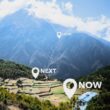
Brand Vision vs. Mission: Understanding the Difference (With 15 Real-World Examples)

The Importance of Brand Localization (+ Successful Examples)
3 Thought-Provoking Podcasts for Branding Enthusiasts

What Is Branding?

Why Is Branding so Important For Your Business?

Finding Your Brand Purpose: Why Is Your Brand Here?

A Simple Definition of Brand Positioning
Recent publications.

How to Define Accurate Buyer Personas for Strategic Branding

7 Areas You Should Nurture to Become a Better Brand Strategist
![branding design case study [object Object]](https://cdn.thebrandingjournal.com/wp-content/uploads/2024/06/Brand-Europe-Branding-80x80.jpg)
‘Brand Europe’ Needs a Hero Movie: Reimagining EU’s Founding Father

Illuminating the Shadows: Crafting an Authentic Employer Brand by Embracing Your Downsides

Launch of Our Branding Course

Lava, Land, and Labels: Rebranding Anakena Wines for the Global Market

Subscribe to Our Newsletter
Once a month, get a curated selection of branding insights and inspiration.
50 Video Lessons | In-Depth Workbook | Templates | Support The Ultimate Brand Building System is now open for registration. Enroll today to stand out in your market and create a future-proof brand.
Most Popular Articles

The Top Branding Agencies In The World [2024]

What to Learn From Tropicana’s Packaging Redesign Failure?

Top Branding Books of 2024

Top 9 Online Logo Makers
Popular case studies.
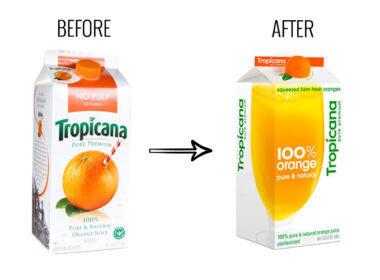
How Not to Re-Create Another Vegemite Isnack 2.0 Branding Disaster
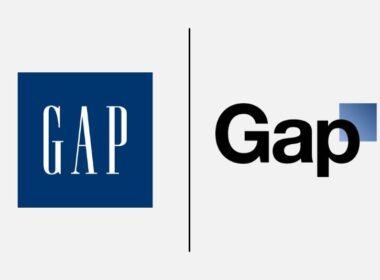
Learning from the Gap Logo Redesign Fail
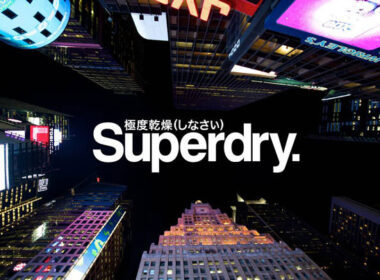
A Brand Case Study: The Superdry Appeal
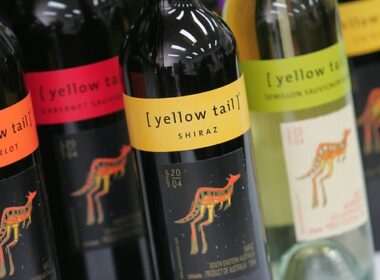
Yellow Tail: Clever Brand Positioning Within The American Wine Industry
Branding trends.
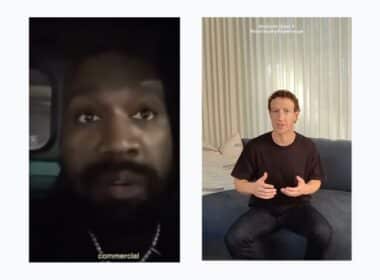
Raw Authenticity in Action: How CEOs are Transforming Brand Communication
Why Brands Need to Embrace Hyper-Personalization to Stay Relevant

Can I Use ChatGPT for Marketing and Branding? Use Cases, Examples, and Considerations
Branding fundamentals.

What is Brand Architecture? Definition, Models, and Examples

The Difference Between Logo Design and Branding

Audio Branding: Now’s the Time for Brands to Invest in Their Sonic Identity

Brand Personality: Definition, Examples, and How to Define Yours
Brand identity.

How to Use Aesthetic Empathy to Elevate Your Brand’s Experience and Value?
Brand positioning.

Dog Food Branding: How Companies Differentiate Their Products in a Saturated Market

Case Study: BeyondMinds’ Branding Journey

How to Successfully Stretch Your Brand Into Gen Z’s Digital World
Brand management.

What is Brand Equity?

Will Baileys’ new brand extension, Baileys Iced Coffee, grow the brand?
Get your free brand strategy cheat sheet..
Provide your email to receive our easy-to-follow branding checklist.
Visual Identity

Elevating Brand Imagery: Lessons from the Detailed Illustrations of the Paris 2024 Olympics Posters

How to Humanize An EdTech Brand: Insights from EdTutor’s Case Study

What Is a Visual Identity and Why Does It Play a Crucial Role in Branding?
Logo design.

Discover the Hidden Meanings Behind These 40 Company Logos

Starbucks Logo – History, Meaning, and Evolution

Why are MasterCard Changing their Logo After 20 Years?

Twitter’s Extreme Rebrand to X: A Calculated Risk or Pure Chaos?

Useful Resources

The Best Online Branding Courses & MOOCs in 2024

Free Online Design Tools to Create Your Visual Identity

The Most Prestigious Branding Awards
ColorWhistle
Digital Web Design Agency India

Explore our Market-Fit Services
We ensure to establish websites with the latest trends as we believe that, products whose value satisfies the needs of the market and its potential customers can be efficiently successful.
Quick Links
- About Us – ColorWhistle
- Engagement Models
- Testimonials
- Case Studies
- Agency Services
- Web Development
- Web App Development
- Digital Marketing
- Travel Website Development Services Company
- Real Estate Website Development Services Company
- Education Website Development Services Company
- Healthcare Website Development Services Company
- Hotel and Restaurant Website Development Services
Category: Case Study blogs Redesign
Date: July 15, 2024
Popular Rebranding Case Studies for Inspiration
Establishing a compelling brand is pivotal for any business, and comprehending the intricacies of branding can be complex. It’s essential not only to understand your brand identity but also how customers perceive your products and services. Exploring brand case studies provides valuable insights, uncovering potential growth avenues based on the triumphs of other businesses. Leveraging the expertise of a reputable digital marketing company can further amplify your brand’s impact through strategic digital marketing services .
Did You Know?
It takes 5 to 7 impressions for people to remember a brand. And what if you were to rebrand the existing one?
Popular companies that were looking to rebrand often found it difficult because the old name was already established. The problem with this is when you are trying not only to establish your new brand but also live up the expectations of existing customers who have grown accustomed to buying from that particular business or industry category over time.
A lot goes down during this step: from researching companies’ history (both past successes/failures), coming up with new ideas about logo designs .
Here at ColorWhistle , we have curated a list of popular (non popular but useful ones too) rebranding case studies that you can refer to, when you are looking to rebrand your brand.
Inspirational Rebranding Case Studies
The rebranding process is a lot like an organism that evolves over time. The goal for any brand, whether they’re doing well or not so much in their market space, is to be able to find ways of improving on what’s already there and sometimes this means changing how you look from head-to toe!
As seen with many brands who’ve gone through major transformations such as Nike Inc., Redbull, Target etc.. Let’s have a look at some popular rebranding case studies to have a better vision of what worked and what was the thought process behind rebranding.
Animal Planet
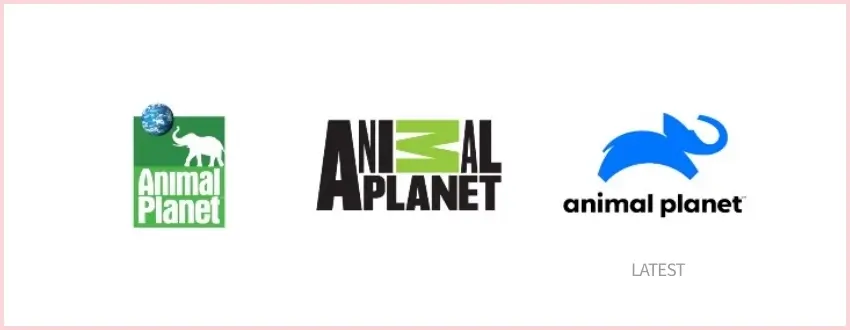
The new logo and tagline for Animal Planet is “Bringing people up close in every way,” which really tells the channel’s story. The graphic reflects this mission statement with an elephant, just representing the mood of the brand!
Case Study Link
Animal Planet has been a much-loved brand around the world for more than 20 years and the time has never been more right to engage with mass audiences across every platform who are as passionate about animals as we are.
– Susanna Dinnage, Animal Planet’s Global President
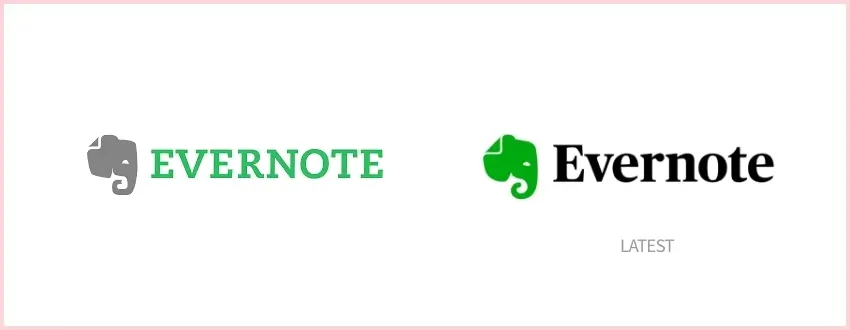
Rejuvenating a well-loved brand is no easy task. But it’s critical to ensure that the refreshed, revitalized product resonates with customers and speaks directly at their hearts in order for them not only stay loyal but increasingly come back again and recommend your business or organization to others.
Your products should reflect what you stand for as an organization so they can speak volumes about who are trying new things while still holding true on key values like quality, durability & affordability; also ensuring there’s room left over just because people want more than anything else truly meaningful when engaging digitally these days
Evernote’s brand rejuvenation is a clear example of well crafted rebranding strategy.
Throughout the process of evolving our brand, we have looked to our past for inspiration for our future. We started as a place to remember everything, and that will never go away. Our brand now reflects our broader purpose.
– Chris O’Neill, Evernote’s CEO

Mailchimp’s branding was a bit outdated and they needed a complete rebranding. They also wanted their website updated so customers could find them easily on different devices like tablets or smartphones instead of just desktop computers.
With this redesign, we set out to retain all the weird, lovable elements that endeared our earliest customers to Mailchimp, while creating space for the brand to grow and connect with even more small businesses. We didn’t want to lose our heritage in the process, so we focused on capturing the essence of what Mailchimp has always been.
– Mailchimp’s Blog
The Ruby Mills
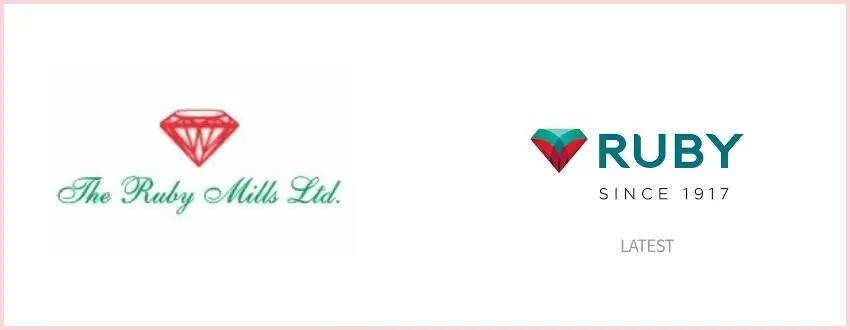
Ruby Mills teamed with a digital agency to rebrand itself and showcase it as a part of the new trending modern digital space. The logo was refurbished to reaffirm the legacy of the brand in a contemporary manner, and yet keeping the visual language flexible enough for digital (online) & offline media and product representation.
The brand name connoted preciousness and gave us a solid foundation to work with. The new identity was found completely aligned to the Ruby legacy and its progressive future.
– Elephant Design, Digital Agency

Slate’s Logo needed a revamp as their logo was outdated and needed a refresh to match the new industry standards. The logo was reimagined and cleaned up for a more distinct look. The “A” is being revealed, uncovering its true form in an elegant manner that hints at all those who have come before it.
Our approach was to visualize Slate’s story-making process with a language that feels like sifting through the news, looking for hidden clues and cracking the code that blows open the case.
– Gretelny, Design Studio

Uber was famous for its inverted U in their logo and when they decided they needed a brand refresh, There were mixed responses and yet Uber’s logo refresh was a very significant one with more sophisticated typography and branding elements.
Molly Watson, the director of the verbal identity at Wolff Olins San Francisco, said the new logo was designed to represent Uber’s growth and security.
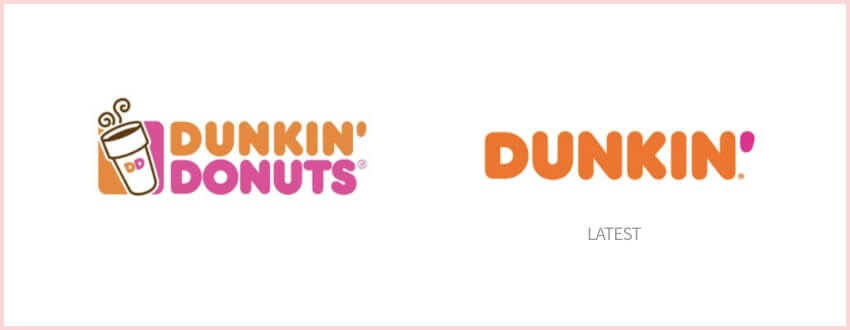
The name dunkin itself reminds us of their bright colors and their fresh look in branding. While rebranding they took a big decision of letting go their second word which is donuts and made a more crispier logo that’s even more recognizable and carried their legacy.
The new branding, developed in partnership with new creative and branding agencies Jones Knowles Ritchie (JKR), BBDO New York and Arc Worldwide, is one part of Dunkin’s multi-faceted blueprint for growth, a plan designed to transform the company into the premier beverage-led, on-the-go brand.
– news.dunkindonuts.com

When you’re just starting out, it is enough to create a single image for your company. But as soon as growth starts happening at an impressive rate and new employees start calling in with questions about how things work or what their function might be within the organization, you need to be more aware of how the brand fits the industry. Dropbos decided on a revamp that didn’t change much but yet created an impact.
Our new illustration style picks up where our earliest style—loose, handmade, witty—left off,” write creative director Aaron Robbs and VP of Design Nicholas Jitkoff.
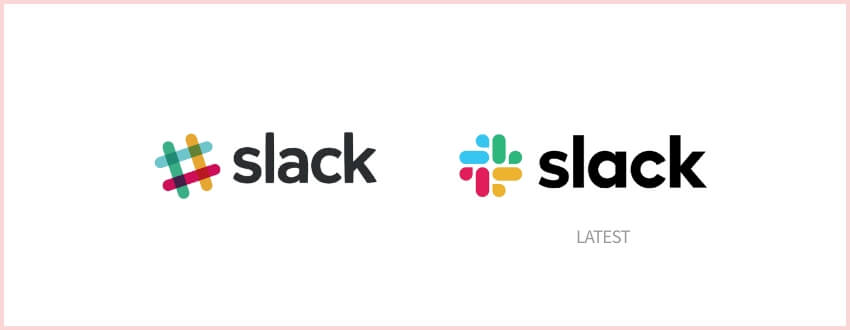
Slack always had an eye of detail in their logo. The hash in their logo was very popular for the kind of brand it was. Yet slack decided to rebrand and give a fresh look to their logo to adapt more into the trend and industry. The new logo looked fresh and more adaptable to the brand statement of Slack
It uses a simpler color palette and, we believe, is more refined, but still contains the spirit of the original. It’s an evolution, and one that can scale easily, and work better, in many more places.
– Slack Team
Intel with the ring is what comes to mind when one thinks about the brand. Intel decided to give a brand refresh while continuing their brand vision and brand statement. They believed that this refresh will help them connect more to their customers and do something wonderful.
The new logo represents a dramatic simplification of the Intel brand identity. Crafted with an underlying geometry, the logo has a refined symmetry, balance, and proportion that is understated and iconic.
– Team Intel

PayPal is a digital payments company known for its bold and progressive innovations. With all the exciting changes in the industry, they considered creating an even more creative expression of PayPal—the original innovator that started it all!
“At PayPal, we always strive to lead as a revolutionary brand. With our rapidly changing environment, we must create based on the needs and changes in the marketplace,” said Christina Smedley, vice president, Global Brand and Communications, PayPal.
Looking for Website Redesign Services?
Seize and experience the transformative impact of Website Redesign Services & Solutions with ColorWhistle.
The importance of branding/rebranding case studies to understand the process cannot be overstated.
These case studies provide an excellent and detailed look at how different brands were able to successfully navigate their own unique challenges, which will ultimately translate into success for your business in various aspects ranging from digital marketing efforts through customer service interactions with clients or employees alike!
Looking for rebranding services? Contact Us
The rebranding process is a lot of work, but it’s worth the effort. Case studies show that when you take on this challenge and succeed in your goal to make an improved version of who we were before-only then will people see how great the new branding really does help to achieve better positioning within markets.
This is where website redesign packages come in. Our packages can help you create a website that seamlessly integrates your new branding, strengthens your customer experience, and drives results. The benefits extend beyond just business leaders – a well-designed website empowers your entire team with a clear and consistent brand message.
-Sankar, CEO at ColorWhistle
In quest of the Perfect Website Redesign Solutions Buddy?
Be unrestricted to click the other trendy writes under this title that suits your needs the best!
- Website Redesign Journey of ColorWhistle – How We Achieved 100% Performance!
- Web Application Redesign – Things to Consider Before Starting
- How to Redesign a Website Without Losing SEO?
- Website Redesign Checklist: 9+ Things to Consider Before Website Redesign [PDF Download]
- Why Digital Marketing Demands Website Redesign?
- Website Redesign Complete Guide
- Why Should you Redesign your Website?

What’s Next?
Now that you’ve had the chance to explore our blog, it’s time to take the next step and see what opportunities await!
Read Similar Content
Wish to explore our services, have an idea or project scope, related posts.
Branding / Rebranding Visualization with UseCases – How to build your brand?

40+ Branding Ideas & Inspiration

15+ Best Kitchenware Website Design Inspiration
About the Author - CW Content Marketing Team
ColorWhistle's content team is a group of rockstar writers and curators who create killer content for clients across industries. From blog posts to social media campaigns, ColorWhistle's content team creates content that captivates audience with content that educates, entertains, and inspires. With a passion for creativity and expertise in digital marketing, the team has what it takes to make your brand stand out in a crowded online space. In short, they're the wordsmith wizards that you want on your side for content that on-brand and on-trend.
View Our Services
Have an idea? Request a quote
Share This Blog
Leave a Reply Cancel reply
Your email address will not be published. Required fields are marked *
Ready to get started?
Let’s craft your next digital story

Sure thing, leave us your details and one of our representatives will be happy to call you back!
Eg: John Doe
Eg: United States
Eg: [email protected]
More the details, speeder the process :)
Discussion Schedule: Ready for a GMeet Call Discussion Today / Tomorrow Available on a Phone Call Discussion Today / Tomorrow Send me a Calendar to Book The Meeting

Innovation Protocol
Intelligent Business Demands
- Let's Talk Brand Contact Us Let's Talk Brand Contact Us
- Learn More Navigate Learn More Navigate
Subject —Please choose an option— I'm interested in working with Innovation Protocol I'm interested in joining your team Press or speaking inquiries
Your message
Please leave this field empty. Submit
Intelligent Brands, Built to Endure
Brands that are intelligent don’t just define an organization, they change industry careers and community cultures. They stretch the mind and the business—and tell purposeful stories with power and passion.
Whether launching or relaunching products, business units, or whole business categories, there’s a protocol for doing it intelligently the first time. Intelligent Brands are built to work hard. We craft and nurture brands that fill gaps, answer tough questions, inspire innovation, and intrigue skeptics.
Case Studies
Reinvigorating a fin-tech software provider by accentuating a capacity for bespoke services
Stretto is a fin-tech software company that provides bankruptcy case management solutions. The company needed a differentiated story that reflected the needs of diverse bankruptcy clients, while emphasizing its sophisticated technologies and experience. Read how our rebrand, including a name change that evoked the capacity for guiding clients through a cacophony of change, helped make Stretto an innovation leader in its space.
Uniting constituents in a large and diverse hospital system with a shared identity and mission
Centura, a large faith-based hospital system experiencing a period of expansion, needed to reconcile differing perspectives across a wide array of stakeholders, pulling them together around a common cause. Learn how we leveraged the health system’s faith-based traditions in a way that celebrated a continuum of community concern, creating a brand story of healthcare delivered by people on a mission.

Elevating a mission-critical logistics provider from the competition by amplifying its peerless capabilities
MNX is the world’s largest independent mission-critical logistics company, specializing in time, temperature and security-sensitive transportation and logistics services. The company needed a brand identity that showcased their capability to handle situations of unparalleled complexity. Read more about how we helped MNX amplify awareness of the highly specialized nature of their services, positioning them as a polished, sophisticated logistics leader.

Reimagining a music production library’s brand to leverage great relationships, simplicity, and accessibility
Megatrax is the leading independent production music library, providing the scores for film, TV, and commercials. Amidst widespread industry shifts, Megatrax needed to stay relevant—but their brand had a confusing story and visual identity. Learn how we elevated the Megatrax brand by celebrating their relationship with the content creators worldwide, leveraging the idea of greatness through simplicity and accessibility.

Revitalizing and uniting a premium snack company post-merger by leaning into authentic traditional values
Hawaiian Host Group is a manufacturer of premium chocolate and macadamia nut snacks with a 95-year history. After a big merger, employees needed unity around one strong employer brand and performance culture. Learn how we capitalized on Hawaiian Hosts’ founder Mamoru Takitani’s vision of pursuing excellence, continued growth, and taking initiative to “make the islands’ future flourish.”

Let’s See and Seize Opportunity Together
Our Clients

- Traditionally a payroll company with 60% of the market, aggressive customers and market demand for additional services put the ADP brand in a critical position: be more to our audiences or risk category leadership.
- By pulling together, repositioning, and storytelling all the added-value services available across ADP’s five business units, we helped launch and brand an entirely new sixth business unit, ADP SmartCompliance. From brand architecture to sales enablement, it became the darling of ADP’s innovation portfolio, and an ultimately came to account for $1B in revenue.

- Mind-bending data was published for Google’s largest customers worldwide and scheduled to be presented at their TED-like event: Think with Google. Despite the power of the data, disinterested responses compromised the value of the insights and risked crashing the event.
- In 30 days, we dug into the data, rethought implications, wrote a narrative, and then represented the dataset as the keynote speaker at 12 Google Think events around the world – becoming the highest rated content in the history of Google conferences.

- The undisputed world leader in executive recruiting and RPO needed to carefully integrate key acquisitions to diversify its services and take the leadership position in Talent Consulting.
- By de-branding, repackaging, and integrating acquisitions ranging from professional skill assessments to original research, we helped Korn Ferry unify and simplify its global solutions from six independent brands to one Korn Ferry – and continue to keynote their global sales conferences more than a decade later.

- Acquisitions and innovations cluttered the PayPal customer and developer experience, creating confusion across products that ranged from browser plugins to bank accounts.
- Over 10 years of consulting, we reorganized offerings companywide – from credit products, to Magento and Venmo, integrated unnecessarily sub-branded features, and created a brand architecture that defines the PayPal experience online, instore, and in-app.

- Brilliant marketers that stay for decades know their business inside and out – but new data and consumer behavior warranted an outside perspective.
- By meeting with each business unit, assessing key data from strategic partners, and evaluating novel-yet-distracting entertainment solutions, we keynoted LEGO’s conference for global marketing leadership twice, and facilitated offsites for LEGOLAND’s executive team to keep both brands proactive and relevant.

- Health science so innovative even the business unit down the hall needs help understanding what you do and how you do it.
- We helped enable the six business units and the enterprise solutions that support them understand their unique part in the Amgen business by helping them each explain their role in under 5 minutes via mini-videos and PowerPoints designed to kickoff any cross-business unit meetings, guarantying collaboration would continue without confusion.

- K-12 education in the United States had been pursued by the world’s largest enterprise software companies for decades – after all, 330,000 schools is a large potential market for business solutions. Not one of them broke through, and private equity decided it was their turn to make the market real
- Our work integrated more than 20 acquisitions via brand architecture, repositioned the Masterbrand for market specificity, constructed an inclusive visual system, built sales and talent training modules, and launched a thought leadership platform that set the category standard – helping Frontline Education hit unicorn status in under three years.

- Fierce competition and a laser focus on major rides preoccupied property leadership and distracted communications teams across amusements, hospitality, retail, and marketing, warranting a brand strategy assessment and plan.
- Our research revealed the real competition – not Disneyland like everyone thought, but local shopping centers and city sites, helping us reposition the property as a place to spend quality time with family and friends emersed in experiences that inspire and entertain, instead of as a resource for roller-coaster recreation.

- A leader in online food ordering and delivery – up against an ever-growing landscape of other platforms competing not only for customer business but for that of restaurants (as partners) and delivery drivers or “Dashers” (a necessary component of their gig economy-based business model).
- Through extensive research, including interviews with Dashers all over the country and employees throughout the company, IP helped shape a differentiated and sustainable Dasher brand; this counsel supported DoorDash’s strategic investment in communications and activations to attract and retain drivers who not only fulfilled their roles (delivering food) but served as ambassadors for the DoorDash brand overall.

- An undisputed champion in academics, sports, and faith – mired in inconsistency, legacy, and fiefdoms… the Notre Dame brand didn’t look the same anywhere… not on the field, in the classroom, or in church.
- Through a calculated, comprehensive, campuswide effort, we redesigned the Notre Dame identity, trained leaders from every team, and helped the university relaunch its brand for its next 170 years.

- One of the oldest, largest, and most prestigious universities in Southern California employed tens of thousands of educators and staff but wasn’t helping them get access to employee services and innovation solutions that were built just for them.
- We helped the office of employee services rearchitect its solutions and outreach methods to bridge the gap between employees and the services they deserved.

- Once seen as a resource for socialites to refine their repertoire of ranting, Toastmasters became the world leader in professional development through intentional verbal communication. With 300,000 global members and clubs on every continent, the brand became highly fragmented and localized and no longer looked like the category pioneer and leader.
- We repositioned the brand to leadership training instead of public speaking, built an all-new brand platform, brand architecture framework, and visual system, and then trained global membership to help the 80-year-old icon achieve record global growth.

- You’ve got an NXP chip in your phone and likely in your car, but you just wouldn’t know it. Leadership realized that being secret but everywhere wasn’t good for business.
- By unifying the global sales team around a common story, branding NXP’s leadership in innovation, and strategically refining marketing voice and investments, we’re helping NXP earn the recognition it deserves and continue leading the Internet of Things revolution.

- Having a vast portfolio of consumer brands makes marketing and sales relationships with key distributors and retailers challenging.
- We produced a three-day summit for North American marketing leadership, realigning the teams on strategic priorities, key brand opportunities, and team collaboration occasions where less could be more, and brand efforts could focus on long-term equities instead of ceaseless monthly sales campaigns that compromised prices and shelf space.

- Traditionally a B2D (business to doctor) organization, the rise of the internet-informed patient and their expectations of patient-first marketing from across care categories warranted a new approach to serving patients with diabetes in the United States.
- By focusing entirely on the customer journey, we helped rescript and prioritize the sales team’s go-to-market approach, changing the perception of Medtronic from a distant medical device company to MY partner in diabetic health.

- The original travel currency resource has created a network of billion-dollar travel agencies that define global travel for businesspeople and the elite worldwide. With so many other organizations targeting those key customer groups, AMEX needed to realign with its top 20 travel partners, fast.
- We produced an exclusive summit in the penthouse conference room for the largest travel agencies in the world to extract their needs, reconnect them with AMEX’s solutions, and redefine how AMEX would serve them going forward.

- The original warehouse retailer knew that online shopping was important but wrongly assumed that simply selling what’s in stock on a website was the answer.
- By carefully evaluating revenue origins, consumer feedback, competitive actions, shipping costs and growth goals, we repositioned the brand online from just another digital retailer to a massive membership benefit – completely changing how Sam’s Club goes to market online.

- The number one source for B2B accounting solutions in the world, troubled by an expansive portfolio, cloud upgrades, acquisitions, and huge board goals.
- A global brand architecture and naming strategy, boosted by a new brand platform, website strategy, and visual system upgrade, helped redefine the board’s objectives, more accurately target key customer segments, and refine the portfolio for easy comprehension and advocacy.

- A massive global suite of multi-unit residences that serve the working professional, the ongoing acquisition of new properties left some sites underserved and unknown, compromising the perceived quality and desirability of the premier property portfolio.
- Through brand architecture, Masterbrand repositioning, and leadership unification workshops, Oakwood’s portfolio has been refined and synchronized, directing equities at a durable brand that stands for class-leading residential solutions for professionals.

- When one of the largest and oldest religions in the world decides that its 1.3 million members in Orange County California are instrumental to its global future, you call in the brand strategists.
- We worked with 64 parishes, hundreds of priests, nuns, and lay leaders to rebrand the Catholic Church and create a vision for the next 50 years. From a massive new messaging and visual system to staff training and website, we completely rebuilt the aging brand into what the Los Angeles Times called “The Future of the Catholic Church in the United States.”
- 7 August 2023
6 Examples of Great Brand Strategy Case Studies

What is Brand Strategy?
The term brand strategy relates to the methods a brand will use to market its products or services to consumers. It focuses on how they present and position themselves in the market. There are several strategies a brand can use and here are some of the biggest.
Company Name
This is where a brand will focus on marketing their company/brand name as a whole. They don’t focus on any specific element of their brand, services or products. Their goal is to improve brand awareness through marketing their name alone.
Individual Branding
This is where a brand will focus on a specific element of their brand. This could range from an individual product to a service, or even a person. This form of branding moves away from overall brand marketing and narrows its focus towards a specific element.
Attitude Branding
This is where the brand markets the idea or emotion behind their brand rather than the name or product. A brand will align itself with this idea, emotion or feeling and market their association with this factor.
Brand Extension
Brand extension is when a brand markets a sub-brand rather than the overall parent brand. Many big brands are owned by even bigger brands, but they don’t market the larger parent brand.
Private Label
Not all brands or companies create their own products. The term private label refers to products that are produced for multiple brands from one creator. Private labels offer an in-house version of commonly produced products, and a brand can market this as a lower price alternative, for example.
Brand Strategy Case Studies
There are many successful branding case studies we could use to explain each element of a brand strategy. However, we believe these 7 examples help explain the power and benefits of brand strategy well.
Red Bull – Company Brand Name
Red Bull is somewhat of a powerhouse in the world of brand marketing. Their company-based brand marketing strategy is one of the most complete but does require a lot of budget. Running F1 teams and sponsoring extreme sports athletes doesn’t come cheap but it can lead to virality.
What Has Red Bull Done?
Red Bull has always known their target market and have found a way to communicate with them. Their initial brand marketing involved finding out where their target market would hang out and hand out free products: increasing brand awareness and word-of-mouth exposure.
Now, with a much larger budget, they still perform the same style of marketing. They know where their target market will be online or what sports they enjoy and position themselves there. Be it an F1 race or an 18 year old university student looking at skydiving content on YouTube.
What Can We Learn From Red Bull?
Understanding your target market will help you position your brand correctly. Their brand is so well known most will associate it name with their favourite sport before a canned energy drink.
Apple – Individual
Apple has always pushed their products before their brand name. Hosting large expos to launch a new product and advertising their latest phone before looking to raise brand awareness. The ‘Shot on Iphone’ ad campaigns are a great example of their marketing efforts pushing the quality and ability of their products.
What Have Apple Done?
Apple focuses on the consumer within its marketing efforts and aligns this with their product. Their push towards innovation is clear from their slogan ‘Think Different’. They look to expose their product strengths and do this through TV advertising and tech influencers.
What Can We Learn From Apple?
If we’re looking to market an individual part of our brand, like a product, it’s important that we first understand the benefits. By understanding the benefits we can market these and draw attention to the selling factors. Ensuring the individual element embodies the overall brand message.
Air Jordan – Brand Extension
One of the most recognisable brand extensions is Air Jordan. A sub-brand of Nike, Air Jordans have become some of the most successful and sought after shoes in the market. They currently sell somewhere around $5 billion worth of shoes each year.
What Have Air Jordan Done?
Nike aligned their product with an up and coming basketball superstar. They also moved away from the Nike brand name as, at the time, it wasn’t ‘cool’ within the basketball scene. By focusing on the brand extension, Air Jordan, they were able to market it alongside the athlete.
What Can We Learn From Air Jordan?
Brand extensions don’t need to follow the same brand message as the parent brand. They can be unique and move away from what would be expected of the parent brand, giving them freedom to push in other directions to reach a wider potential customer base.
Aldi – Private Label
Aldi is a European supermarket that has found great success with their private label range. In fact, 90% of Aldi’s products are private label and, as the majority of their products are in-house, they’re able to control price and availability. This flexibility gives them an edge over their larger supermarket competitors.
What Have Aldi Done?
Aldi have run a number of brand marketing campaigns, however, their focus on the quality of their private label stands out. The ‘I also like this one’ campaign is a great example of how they compare themselves to others in the industry. Backing it up with consumer data, they are able to stand out as just as good but less expensive.
What Can We Learn From Aldi?
If you’re a private label brand, it’s important to know your strengths and weaknesses. Perform market research to gather relevant data and market using this information. Part of the 4 Ps of marketing is ‘price’, so it’s important to consumers that the price is competitive.
Jeep – Attitude Branding
Jeep brand themselves alongside the idea of adventure. Jeep’s marketing campaigns are all focused around the idea of the car being a tool to achieve adventures. This is a great example of how a brand can align themselves with an idea and brand the idea with the product.
What Have Jeep Done Well?
Jeep have understood their target market and have in some ways built their target market around their products. They have positioned themselves through advertisement and product placements to be recognised alongside an attitude.
What Can We Learn From Jeep?
Marketing and branding doesn’t always have to be about yourself. Branding can be an idea that you and your products envelop. Marketing this idea can associate you with that idea. You are therefore no longer just Jeep, you are the adventure car.
Enhancing a Brand Strategy
Not every brand is the same and not every strategy works for every brand. It’s important to understand who you and who your customers are before you develop a brand strategy. Knowing this will give you the best chance of success when launching a new campaign.
For more help and support in creating a brand strategy for your business or company get in contact with Fellow. You can also view our brand strategy page here.
Drop us a message
Maximum file size: 268.44MB
Recommended Articles

How to Develop a Brand Strategy?

How to Choose a Brand Name

How to Identify Your Brand

How To Create Sustainable Packaging Design?
Fellow - creative branding agency in london.
At Fellow we believe the great design reflects ambitious clients. We have a passion for all digital and print designs, not just creative branding. You can view all our services here.
Fellow Studio © 2022
Join our mailing list
Call us on 020 8058 1998 or email [email protected] The Department Store Studios 19 Bellefields Road London, SW9 9UH, United Kingdom
Privacy overview, subscribe to our newsletter.

Branding Strategies And Marketing Case Studies
A collection of brand strategy and marketing case studies that provide analysis, insights, and examples around visual identity, positioning, tone of voice, key messages, brand archetypes, content, competitors, and more..

Our Content Is Featured In:

Use our new AI app to see where your messaging and positioning are strong, weak, and where your brand stands out from the competition.
Explore the brand and marketing case studies.

View The Case Study
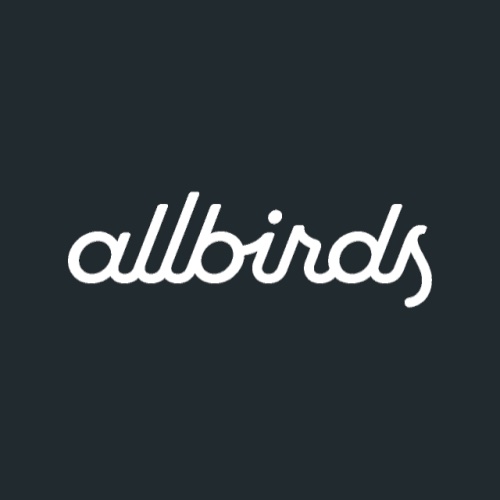
Booking.com

Burger King
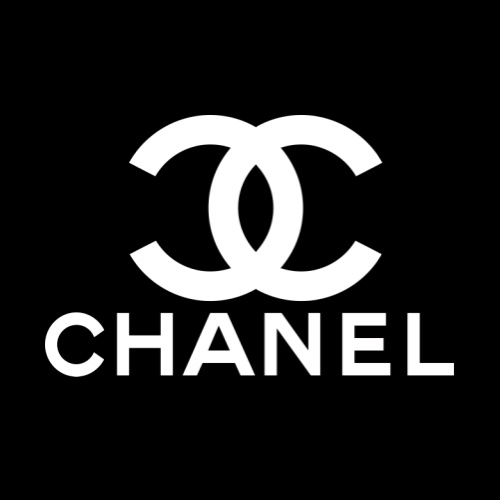
Harley-Davidson
Get Help Growing Your Brand

Get a 10 page workbook on Purpose, Vision, and Values. Plus resources for Archetypes, Tone, Messaging, and more.
Check your email to confirm your address and receive your workbook!
- Logo Design
- Brand Naming
- Brand Tagline
- Label Design
- Brochure Design
- Business Card

11 Famous Logos and their Successful Case study
In everyday life when we see so many brand logos, we appreciate few and others vanish from our mind. Have you wondered what makes a logo creative that will stay in the minds of people and doesn’t vanish?
In this blog, LogoPeople will take you behind the scenes and discover what it takes to design a successful logo. Some eye-opening logo design case studies below will help you make an overview of successful logo designing.
Table of Contents
Google logo represents all the positive, energetic, and young forces. It’s simple, brief, and powerful.
The very first impression of the Google logo is that it is simple and colourful!
Brands collect all information from data online, sorts and display them to the users of Google results. Irrespective of colour, race and area it treats users equally.
If we ignore all colours, only the simple word” G” is visible, which is its theme. In real life also we are bombarded with much information, but we urgently need a convenient service to sort data and provide what we need most. That’s what Google does! Google doesn’t use any art fonts that are hard to read. Instead, all Google logo fonts are straightforward.

It all started with a fruit Apple, the falling fruit that led Isaac Newton to discover the gravity concept. The main idea behind Apple is bringing simplicity to the public, with the most sophisticated way. It was simple but strong and with changing, the evolution of logo’s from 1976 till today thought it brought variations in its colours, but the shape of the logo remained untouched.
When Apple came up with its first-ever iMac, the Bond Blue, the logo was modified and its rainbow colours disregarded. They thought that the rainbow-coloured logo would have looked childish, silly, and out of place on the sky-blue compute.
The logo then took designed with a luxurious metallic look with embossing. The “Glass” themed logo design was the next evolution for the logo. Now the company uses a more modernized flat “Millennial” Apple logo.
The logo matches the personality of the brand when we think of Apple’s products; we think of words like accessible, sleek, and intelligent. The logo conveys just that.

The brand Nike “swoosh” has one of the most recognizable and iconic brand logos. The recent advertisements let go the Nike name and use only the logo, combined with their tagline “Just do it.” Graphic design student Carolyn Davidson created the logo. Despite being a famously simple logo, it has evolved and changed since it was initially conceived.
The line reflects the goddess Nike wing, who gave the brand a name. Nike means the victory in ancient Greece and patronized the athletes. The Swoosh is known to the whole world and transmits sound at high speed. It is a symbol of eternal and constant movement.
The wing shape was designed as a reflection to stimulate athletes to achievements and actions such as the tagline “Just do it” that appeared later.

In 1971 a logo featured the full company name “Federal Express” inside a rectangle which was divided in two by a diagonal line. The corporate colour palette included three hues (blue, red, and white) that portrayed the ideas of power and professionalism.
Such as colour orange stands for FedEx Express, red is a direct indication at FedEx Freight and green is the corporate colour of FedEx Ground.
FedEx emblem is simple if you look between letters E and X, you will spot a white arrow which stands for accuracy speed, strive for perfection, and perseverance in achieving goals. It looks stylish and relevant even decades after its last re-designing.
The FedEx logo is a textbook example of how to use negative space; for the iconic hidden arrow, designer Lindon Leader paired the Universe 67 and Futura Bold fonts

It consists of a thick black ring encircled by a silver lining where the word ‘BMW’ is inscribed in a non-serif typeface in the top half of the black ring. The ring was partitioned into four equal alternative colours of blue and white quarters which are known as “roundel”, which was created and registered in the year 1917.
It is remarkably simple and projects an identity that is smart, clear, sporty and image-conscious.
The white and blue colour of logo has many variations such as:
Sky blue and white fields other are interpretation to a rotating propeller and BMW logo to Bavaria where the products are produced”.
On 3rd march new logo is revealed to match their new release i4 car concept. The circle shape is still the same along with the blue and white colour. The lighting and 3D effect replaced the thick black ring with a transparent one to develop a more straightforward and minimal logo.

6. Coca-Cola
Over the year 1886 there were many changes in the logo, but there was never a dramatic change, aside from the addition of the “white wave” that we commonly see underneath the text or classic, and script lettering that has largely remained the same.
The logo represents originality and classiness; the cursive and fashionable lettering is truly unique and personifies the stylish class of its brand. The brand has created red and white colour as the anthem of cold drink. It is the most desired logo all around the world due to its emotional connect and nostalgic feel.
Red displays energy, appetizing, passion and excitement. The logo is very simplistic, and hence it stayed in the minds of customers. In fact, people recognize the logo with just colour and font style also.

7. Mc Donalds
McDonald’s iconic logo has gone through a lot of changes during its history. The logo was just a simple sketch of a chef in the 1940s. Now it has been transformed into one of the most recognized logos, eliminating its unnecessary elements over the years.
The McDonald’s brand logo looks similar to two of the restaurant’s golden brown French fries bent into the shape of an “M”.
It is a subtle message that advertises one of McDonald’s most popular menu items without the viewer, even realizing it. The brand chose to incorporate the slogan “I’m lovin’ it” into their logo. In this slogan, the company purposefully uses lower case letters and abbreviation to convey a calm and informal tone.

The packaging design of the Pepsi label has contributed in a massive way to the victory of the brand. The Design of Pepsi Logo is simple, attractive, instantly visible and helps in catching the attention of people towards the beverage.
Pepsi Globe shape logo that we see today has gone several changes over the years. The new Pepsi brand logo is now a simple circular design without the company name, which simplified version of the logo that act as excellent on all promotional campaigns. Started with almost same typography and colour as their competitor brand Coca-Cola, but now brand logo uses blue and red as these are contrasting colours.
The middle white strip increases the contrast more for producing tantalizing spectacle. The word Pepsi are typecast at the side of the globe this time in the lower case. The centre white space gives a smiling face to the logo. Current Pepsi logo has a patriotic palette of the year 40s, minimalistic design of the years 70s and script-like curves from the brand logos original look.

Shell from 1891 has gone many changes with its brand logo, but the picture of the shell has never disappeared.
The company wanted to align the colours of the Spanish flag, where many early California settlers were born to try and form an emotional bond with their customers. The shell represents a mollusk, which reflects the company’s trading roots, and part of the eco-cycle of oil exploration.
Bold and robust font lines indicate a bold company with a strong standing in the business world. Shell’s colours remind us of the company’s heritage.

10. Microsoft
Microsoft started with a soft coloured graphic which carried a suggestion to data structures. The ‘times’ family moved a crossed ‘W and this logo had a professional and sophisticated look.
Over the years it added more colours to its logo such as red, green, blue, yellow along with bolder sans type. The later logo acquired cleaner, 3D that presented as the plastic look and hence after two generations the logo came up as flatter ad cleaner design.
These few changes were aligned with the evolution of digital screens. As the resolutions get better, the type gets thinner.
Finally, the present logo, with the arrival of Windows 8 was a time when the whole design philosophy of Microsoft products was changing- when the entire design world was realizing the utility of flatter designs.

11. Walmart
The company played around with various designs, mostly flip-flopping on whether to hyphenate the company name in the logo to read “Wal-Mart” the company eventually settled on the latter in 2008.
“Walmart” which was spelt out in all lowercase letters accented on end by a yellow sunburst, the brand refers as “the spark”. The logo marks the 6th version of the brand logo design and said that the design was to make shopping more attractive to higher-income families.
The soft blue and yellow colour is an attempt to be more welcoming and inviting to their customers across the world. The spark is a symbol of inspiration and innovation, both things that have driven the company forward over the years.
The new logo didn’t have to be completely innovative and original; it just had to be different from their old one—something that would represent a fresh start and a new direction for the company.

Some other famous and successful brand logo:

Conclusion:
After going through the above beautiful and iconic brand logo case studies, there are also many other famous and successful brand logo such as Adidas, Honda, Starbucks, Rolex, Mercedes, Google, Chanel, Mickey mouse, Sony, Toyota, Dell, ford, ebay, Disney, Harley Davidson, Burger king, Dominos, Jeep, Amazon, Costa coffee, Android, CNN, Nestle and many more in list. We are sure you have enriched your knowledge. Case studies make us realize that these giant companies have also once faced issues. Their logo today, we see their famous and most recognized logo all around the world, but now we know they have even gone through a journey of modifications and alterations to get that one perfect logo. Though changing time and market makes us keep updated with logo design, it is essential to approach a professional logo design agency who understands your requirement and then work. The agency that thinks for your future expansion and aligns such relevant elements in your logo design is significant. You can connect us if you are confused or ready to change your old logo and take a new direction, we will make you achieve your vision.

Being a strategist’s head and a long term visionary personality aims to achieve excellence in branding, packaging and digital marketing field. My 15 years of design experience and masters degree ais my strength which keeps me motivated and keep me going positively. I have participated in extensive branding design conquests in India, USA, Australia and New Zealand with winning zeal. My objective is to encourage start-ups and hence involves actively in the articles which will act as a productive intake of knowledge for them. Do connect me personally via my LinkedIn and I love to share my expertise with you.
Leave a Reply Cancel reply
Your email address will not be published. Required fields are marked *
Latest Blogs
July 30, 2024.
Tourism Branding Strategies that Captivate Global Travelers in 2024
July 12, 2024.
100+ Soap Packaging Designs That Will Make You Want to Buy Them All!
June 28, 2024.
100+ Law Firm Branding Ideas to Attract Indian Clients in Legal Sector
Disclaimer: The ownership and copyright of the listed designs rest with their respective companies who have full worldwide ownership of the designs.Our blog is just presenting different creative design without any claim of ownership or rights. We are just showcasing the information for design inspiration and creativity.

- Packaging Design
- Website Design
- Custom POP Displays
- Case Studies
- Contact Us Today
- Call 888.337.0066
Packaging Design, Brand Development, and Branding Case Study Examples
At Catalpha, we have helped countless clients with their marketing strategy and rebranding process. Our approach to client-centric problem solving means no two client engagements are ever the same. To that point, neither are any two of our rebranding case studies.
Below, we offer just a handful of brand marketing case studies profiling our successful rebrands and partnerships. These intend to show how Catalpha approaches brand management partnerships differently.
Genius Gems Branded Packaging Case Study
Genius Gems excels to enrich kids lives by learning through STEM-focused play. At the center of these activities?— magnetic tiles—which needed branded packaging.

Brand Development Case Study: Candy Packaging
Three years ago when the largest buyer and seller of Pecans in the US came to us, they were looking to move from wholesale to the retail market and wanted a new package design for their four top selling products.
Packaging Design Case Study – Back Pain Relief Product
After years of development and product development, the client knew his back support would require a package and brand look that backed his reputation and research.
Packaging Design Case Study: National Hardware Tool Brand
While Catalpha collaborates with many entrepreneurs and startups who develop and launch their brands, we also are a trusted source for many top national brands.
Packaging Design Case Study: Vape Product
When a product category heats up and you have something to sell, you have to strike while the iron is hot.

Packaging Design Case Study: Snack Food
Designing A Brand Shift For a New Market Share.
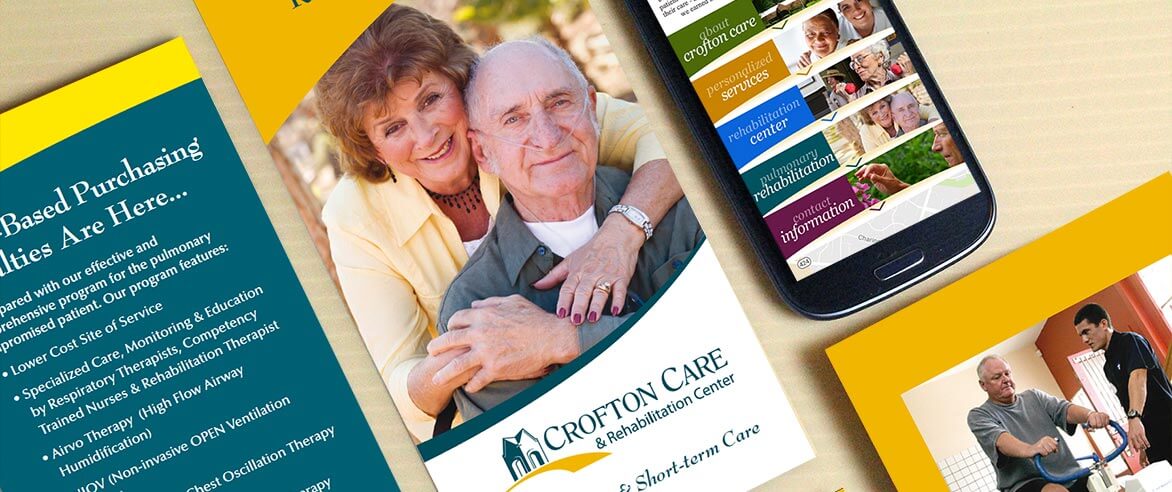
Crofton Care Branding
Branding Design Case Study: Nursing Home
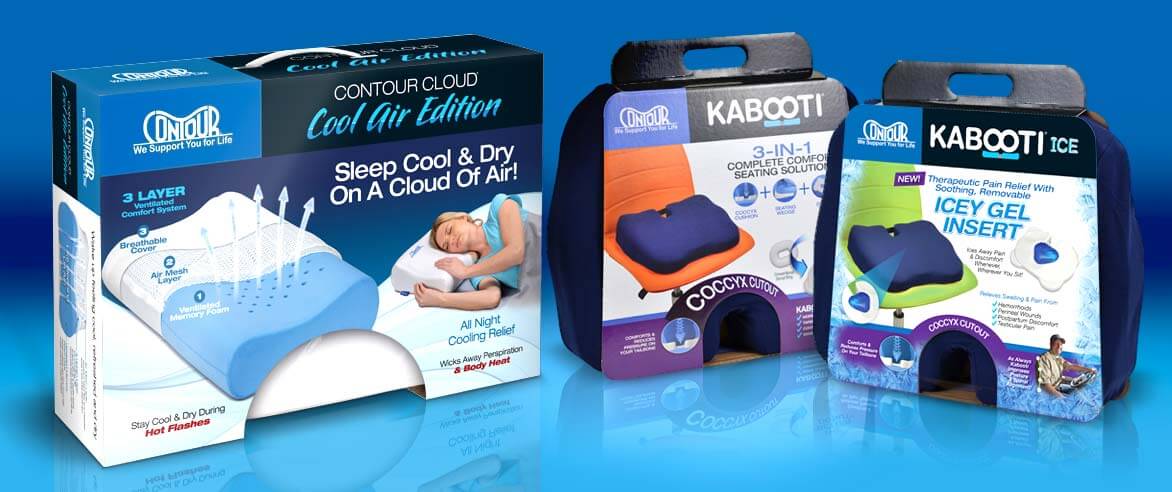
Home Healthcare Case Study for Packaging Design
Catalpha created new packaging design for the product line using similar package structure.
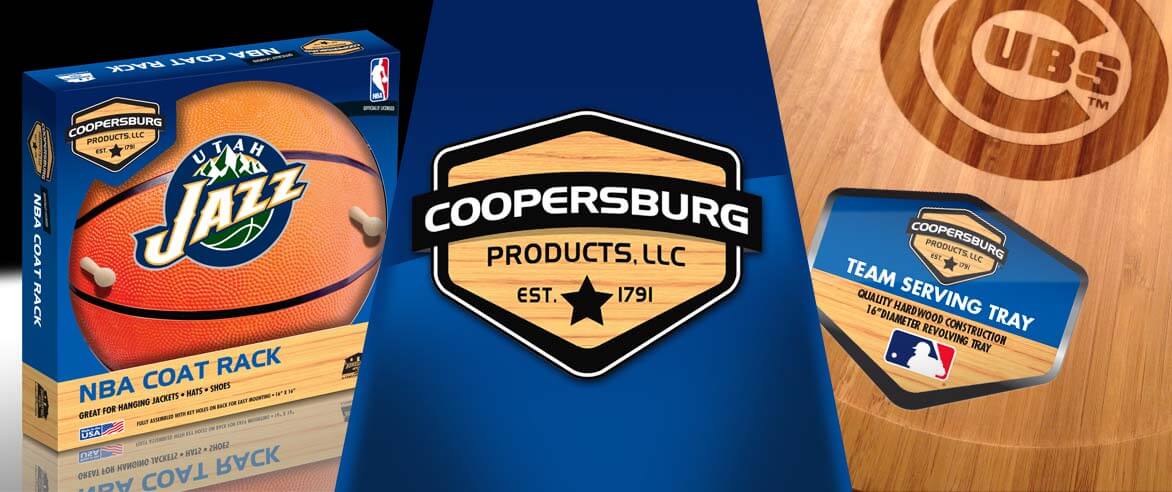
Branding Case Study: Coopersburg Branding
In business since 1791, the Coopersburg products were undergoing a major revival.

Cobra Branding
Logo and Packaging Design for this new hardware organizing product
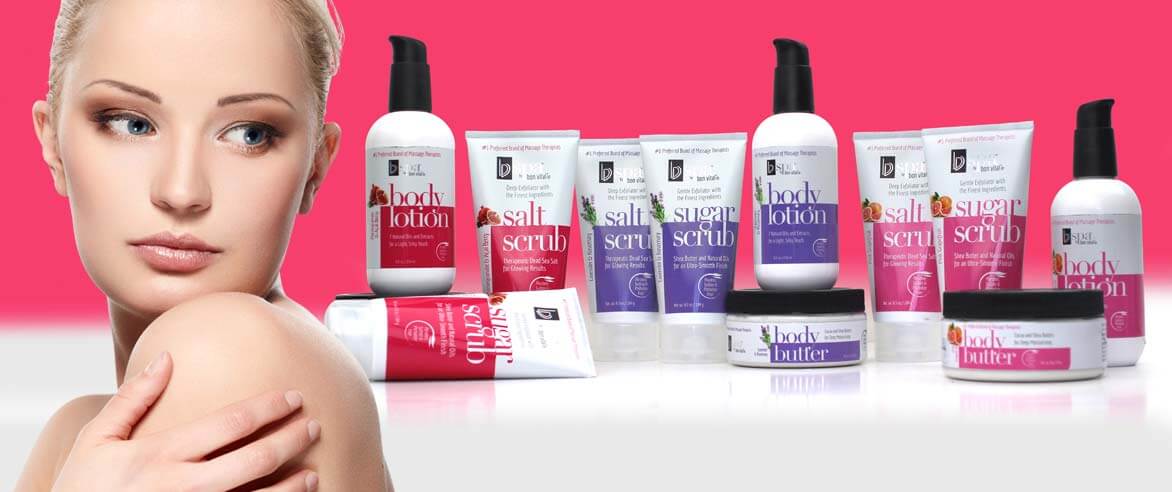
BVspa Branding
New Brand Created In The Beauty Product Spin Off Category
Solo Branding
Multi-level Rebranding – Good, Better, BEST!

Perform Branding
Health / Retail Drug Channel Skin Care Product Gets Facelift.

Lotsa Mozza Branding
A Restaurant Launch From The Ground Up

TheraBand Branding
Long Time Health Therapy Market Product Gets A New Look.

Ecommerce Solutions
Catalpha Advertising & Design Offers Affordable E-Commerce Solutions to Expand Sales Custom Web Sites and Catalogs Add Value to Retail […]

The Cancer Institute at St. Joseph Medical Center
Highlight the Specialty Physician Staff at the new Cancer Institute. Focused marketing campaign uses established brand look to create market […]

Victim Assistance & Sexual Assault Program
Catalpha Helps VASAP Inform the Public of the Services to Domestic Violence and Rape Victims Marketing for non profit to […]
Brand Strategy Case Study: SECU Credit Union
Catalpha Helps Revitalize Marketing Efforts Branding strategy launches new look for existing credit union. Develop a graphic look that would […]

Senior Living Healthcare Marketing
Senior Living Healthcare Marketing Rebranding for Crofton Care & Rehabilitation Center Logo, website and marketing & sales materials. Rebranding for […]

Johns Hopkins Health System Advertising Case Study
Announce Grand Opening of New Johns Hopkins Clinic in Odenton Multimedia campaign uses coordinated radio, direct amail and newsp[aper advertising […]

Catalpha Presentations Score Big
Creating Multimedia that Makes an Impression Presentations play a key role in business, whether that business is conducted in a […]

St. Joseph Medical Center Cancer Symposium Direct Mail Campaign
Direct Mail Campaign for the St. Joseph Medical Center Cancer Symposium Two part direct mail event invitation with online sign-up […]
U.S. Family Health Plan
U.S. Family Health Plan at Johns Hopkins Coordinated marketing tools throughout the year increases membership to military healthcare program. Marketing […]

Washington County Health System
Unique needs. Great results. Multimedia campaign promotes and educates urgent care center to neighboring audience. The success of Washington County […]
Smyth Jewelers Ecommerce Website
Catalpha Introduces Smyth Jewelers to a National Audience with a Complete e-Commerce Site Translating the success of print catalogs to […]

Rebranding Bombay Juice
A New Look for The Bombay Juice Line Institutional marketing for juice manufacturer identifies new products and packaging. Promoting their […]
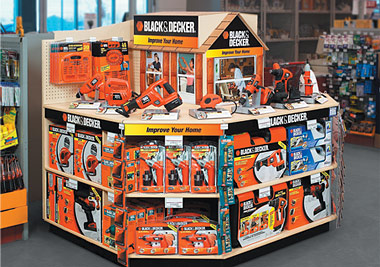
Black & Decker In-Store Display
Increase Lowes Home Improvement Warehouse Buy In of Black & Decker Power Tools In-Store Display solution for Lowe\’s tool area. […]
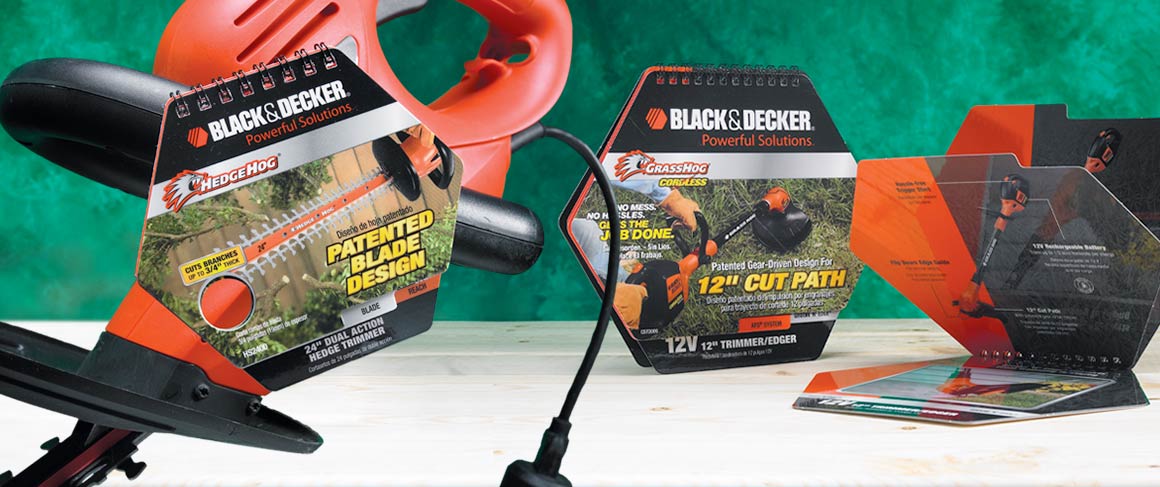
Black & Decker Point Of Purchase
Brand Identity at Point of Purchase: Catalpha Helps Black & Decker Develop the Right Image Chances are you didn’t think […]

University of Maryland Medical System
A Unique Visual Identity for Each University of Maryland Medical Center Department Brand development lends consistency to multi-center medical foundation. […]
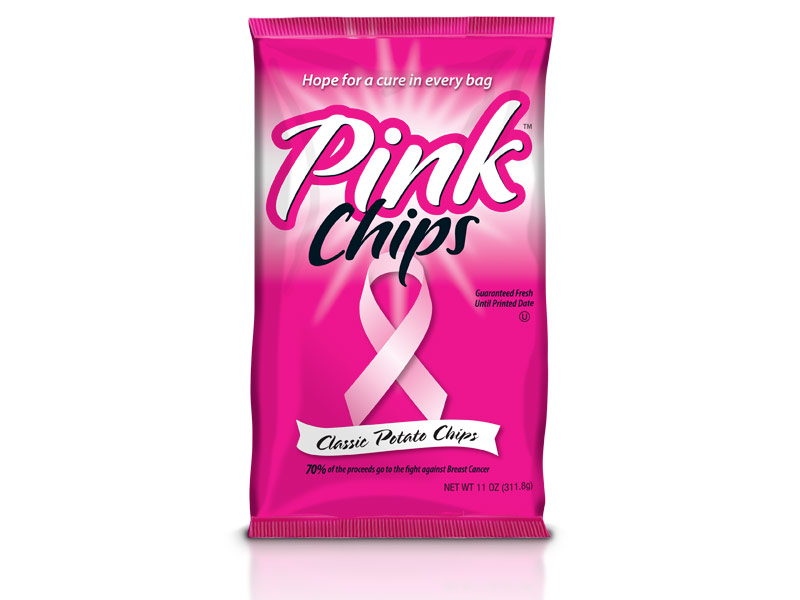
Packaging Case Study Food – Pink Chips
Catalpha’s Food Packaging Design Helps Fight Breast Cancer Catalpha was recently able to help create the package design of a […]
Didn’t find what you were looking for in our product case study list above? There’s much more of our story to tell.
If you want to learn more about our process, reach out to our team directly at 888.337.0066. There are many more brand management case studies in our portfolio. We are happy to customize a collection of branding case study examples that are sure to be relevant to your business.
- Design for Business
- Most Recent
- Presentations
- Infographics
- Data Visualizations
- Forms and Surveys
- Video & Animation
- Case Studies
- Digital Marketing
- Design Inspiration
- Visual Thinking
- Product Updates
- Visme Webinars
- Artificial Intelligence
How to Create a Case Study + 14 Case Study Templates

Written by: Brian Nuckols

When it comes to high impact marketing content, case studies are at the top of the list for helping show off your brand’s stuff.
In this post, I’ve put together a few high-level case study design tips as well as 14 professionally designed case study templates that you can use to start designing beautiful case studies today.
Let’s begin!
Here’s a short selection of 12 easy-to-edit case study templates you can edit, share and download with Visme. View more templates below:

What is a Case Study?
A case study is a way for you to demonstrate the success you’ve already had with existing clients. When you create a case study, you explore how previous clients have used your product or service to reach their goals.
In particular, a case study highlights a specific challenge or goal one of your clients was struggling with before they discovered your product.
It then demonstrates how your work has assisted them on the journey towards overcoming the challenge or accomplishing the goal.
A case study’s outcome is typically to share the story of a company’s growth or highlight the increase of metrics the company tracks to understand success.
The case study includes an analysis of a campaign or project that goes through a few steps from identifying the problem to how you implemented the solution.
How to Write a Case Study
When it comes to adding irresistible design to your content from the start, using a helpful tool is a great start. Sign up for a free Visme account and start highlighting your own client success stories using one of our case study templates today.
Also, while you’re beginning to transition your case study workflow to include a professional design tool, it’s helpful to review some high level principles you can incorporate into your case study.
We’ll start by reviewing some of the critical style tips and structural elements to include in your case study before progressing to a more detailed design section.

Pinpoint Your Main Message
When designing an impactful case study, it’s essential to stay clear on the metrics that you’re highlighting. The process of overcoming business challenges is a dynamic process with many moving parts.
If you do not stay focused on what matters in your case study, you risk obscuring the big win your client experienced by using your product or service.
This is why you need to focus on a single message or metric. This is often called the north star metric .
The north star metric is the single most crucial rate, count or ratio that helped your client move closer towards their goals or overcame an obstacle.
While north star metrics are context dependent, a useful heuristic you can utilize is to figure out the most predictive metric of your client’s long term success.
In the template I’ll highlight below, cost per lead was the north star metric that The College for Adult Learning needed to optimize.
Build relationships with customers and drive sales growth
- Reach out to prospects with impressive pitch decks and proposals that convert
- Monitor clients' level of engagement to see what they are most interested in
- Build a winning sales playbook to maximize your sales team's efficiency
Sign up. It’s free.

Use Emotionally Rich Language
Recently researchers at Presado did an interesting study to understand the types of language that help readers take action. They broke the content included in marketing assets into several categories, including functional, emotional and descriptive.
In the most successful pieces of content, the researchers found that emotionally coded words were present in 61% of the content’s total volume.
This research shows the benefit of using emotionally engaging content in your case study. While it’s essential to focus on the concrete evidence of how you helped your client get from where they started to a successful outcome, do not forget to highlight the emotional journey.

Use Data For Concrete Evidence
Once you’ve decided on the north star metric to highlight and you choose the emotional response you want to reinforce in your case study, it’s important to use actual data from the project to share the concrete results your product helped to achieve.
To make sure your audience can follow your line of thinking, make sure the data in your case study is precise. If you track data across time, your readers must know whether you chose to track by month or years.
If there are any apparent trends, you can use color to highlight specific areas in a chart.
If you want to dig deeper into using data to tell compelling stories, check out our video data storytelling tips to improve your charts and graphs.

In the template below, The College for Adult Learning case study is an excellent example of how these elements can work together.
Cost per lead was a critical north star metric, so we chose to emphasize the increase in revenue and a decrease in cost per lead.
Additionally, the background section uses emotionally rich language by highlighting how the school helps students get ahead with their career goals. Also, the factual data is the centerpiece of this page in the case study.
If you’re ready to share how you impacted a client, use the College for Adult Learning case study template right now!

Include All Necessary Parts of a Case Study
After you’ve interviewed your client and you’re getting ready to start writing, it’s important to remember each piece you need to cover.
All good case studies consist of five parts: Introduction, Challenge, Solution, Benefit and Result.

While you don’t necessarily need to label each section like that, be sure that the flow makes sense and covers each section fully to give your audience the full scope of your case study.
RELATED: 15 Real-Life Case Study Examples & Best Practices
14 Case Study Templates
Now that we have explored some of the high level strategies you can use to create a business case study, we will transition to 14 case study design templates you can use with Visme.
1. Fuji Xerox Australia Case Study Template

Use the Fuji Xerox case study template to showcase the concrete results you achieved for your clients. It has sections where you can explain the goals you started with and the results you achieved.
2. College for Adult Learning Case Study Template

As we’ve explored already, the College for Adult Learning template has sections where you can embrace a data driven storytelling approach while also connecting with your audience using emotionally rich language.
Utilize the professionally designed business case study to connect with your audience.
3. Intel Case Study Template

The Intel case study has beautiful visual elements and gives you space to share the project’s context and the goals you set out to achieve. It also allows you to get concrete with the results you achieved.
You can always use the Visme Brand Kit to incorporate your unique brand colors into this stunning design.
4. Bit.ly Case Study Template

Bit.ly is a marketing product that helps brands track how they are doing with campaign results. The bit.ly business case study template showcases how they drove impressive results for an eCommerce business.
You can modify the professionally designed case study template to illustrate the key results you drive for your clients.
5. NVISIONCenters Case Study Template

The NVISIONCenters case study template is an excellent example of how powerful it is to pair beautiful designs with the results you generate for your clients. In this case study, we see how you can transform your past accomplishments into a powerful marketing asset.
6. Adobe Case Study Template

The Adobe case study is an exciting example of a business case study because it does a great job illustrating how you can use a specific result to create a powerful marketing asset.
Adobe had a particular goal of branding to position itself as a leader for the future of digital marketing. LinkedIn sponsored messages was an effective tactic to drive the outcome Adobe needed.
You can use the Adobe case study template to demonstrate the success of your most effective tactics.
7. Inkjet Wholesale Case Study Template

The Inkjet wholesale case study template is an excellent choice if you want to experiment with your case study’s visual element. The roadmap to objectives diagram is a powerful graphic that illustrates the journey of a successful campaign.
8. Neutrogena Case Study Template

If you have a strong visual brand to tell your case study’s story with visuals, the Neutrogena template is a great choice. It is already designed with plenty of space to highlight your visuals.
When it is all said and done, you have the results section to complete a successful client partnership story.
9. Weebly Case Study Template

The Weebly case study template is your choice if you want to add visual flair to your case study. The beautiful layout is a testament to the power of pairing minimal design with an exciting statistic.
10. Patagonia Case Study Template

The Patagonia case study is a perfect example of how crucial it is to make design choices based on your brand’s unique personality.
It is a fantastic choice if you have a project to showcase featuring a brand with a distinct brand aesthetic.
11. Think With Google Case Study Template

The Think With Google case study template tells the story of a mobile game that needed to create more engagement on their app.
It is a visually impactful case study design template that you can use to tell a compelling story about your results.
12. Kleenex Case Study Template

This case study template is the perfect way to show off search marketing results for a client or other highly specific KPIs that you managed to accomplish.
Insert the initial challenge followed by your company’s solution and adjust the included data visualization tools to showcase your specific results.
13. Customer Experience Presentation Case Study Template

The presentation case study template is an excellent choice for blending beautiful visual elements with the ability to give detailed information about the results you generated, as well as showcasing that data in a unique format.
If you are ready to show how the unique features of your product or service drove real world business results then it is a good choice for your case study.
14. Webinar Presentation Case Study Template

One small business saw incredible results when using Visme to optimize their webinar workflow. They saved 100 hours of their precious time by incorporating our collaborative design tools.
We designed the small business template using those results as an example. When you have an eye catching effect to showcase to your audience, you can use this template as a starting point.
Case Study Design Tips
Now that we’ve explored the 14 templates you can use with Visme to create your case study, let’s take a look at some practical design tips that will take your content to the next level.

Be Brief In Your Case Study
In discussions about writing with style, brevity is a common topic. However, it’s also an important design principle.
Brevity in design is when you find the best way to perform your intended objective in as few steps as possible.
When designing your case study, make sure you do not add extraneous visual elements where they are not needed. Instead, think of the effect you want to have on your reader and try to do it simply.
Describe Your Vision Clearly
Earlier in this article, I wrote about the north star metric, your case study’s emotional effect and using data to make the case study concrete. Your design choices should serve to reinforce these primary goals.
Clarity in design is when all of the visual elements add up to a whole.
A great example of this is in the small business case study template where the shapes, typography and color scheme all emphasize the main idea that Visme helps the reader save time.

Create A Consistent Style
Visual consistency is a fundamental design principle that you can not afford to ignore in your case study. It will help you increase readability and make sure your audience does not get frustrated with jarring visual elements.
In short, a consistent style is when you use a uniform color scheme, typography and the same kinds of visual elements throughout the case study.
Use A Case Study Template For Readability
Readability is a crucial element of design, especially for case studies that are experienced on mobile devices. Contrast is an impactful readability principle.
Make sure any contrasting colors you chose are easy on the eye and your reader does not have to strain to read your case study.
Use Proper Alignment In Your Case Study
Alignment is one of the principles of design that sets professionally designed business case study templates apart. Great designers have an intuitive eye for the mathematically based ratios of proximity invisible in sound design and an eyesore in lousy design.
The good news is that you do not have to be a mathematician nor a professional designer to have a perfect alignment for your case study. Visme utilizes an easy to use drag and drop design tool that helps you achieve proper alignment in your case study.
Let Your Brand Personality Speak
When we make intentional design decisions, we want to create a positive emotional experience for our audience. One of the best ways to do that is to make decisions that showcase your brand’s unique personality .
Is the case study you are creating like a well dressed business person who is serious, trustworthy and capable of doing a great job? Is it more like an extravert at a party bouncing from person to person lighting up the room?
There is no right answer, but you need to infuse your viewpoint into the case study you create if you want to create a unique design.
Start Designing Your Case Study Today
A professionally designed case study template will help you create a stunning case study. While reviewing some high level design strategies is an important step, a tool like Visme will help you make a real impact on your audience.
If you’re ready to create your next case study, get started with Visme today .
Design beautiful visual content you can be proud of.

Trusted by leading brands
Recommended content for you:

Create Stunning Content!
Design visual brand experiences for your business whether you are a seasoned designer or a total novice.
About the Author
Brian Nuckols is a writer working in Pittsburgh, Pennsylvania. He enjoys communicating visionary ideas in clear, action oriented language. When he’s not working on content for a transformative company you can find him analyzing dreams, creating music, and writing poetry.
Get inspired by design stories
Monthly UX and product design case studies. Trusted by designers from companies like Apple, Google and Spotify. It's 100% free.

5 Great case studies of big brands evolving
In the past few years we've seen a lot of big brands evolve into something new. The rebranding case studies listed below all show their new strategic brand direction.
Changing a brand is a huge risk and is not something that is done without a reason. There's a lot at stake and when done incorrectly, will have big consequences.
It's a powerful move that can reposition them in both new and existing markets. When done right, they'll be stronger than ever and earn peoples trust.
In the case studies listed below well see that some are more bold and daring than others, yet everyone is considered to be a success.
Below you'll find 5 big brand case study examples that happened in the past few years

The most unexpected rebrand and probably "top 10 all-time weirdest rebrands in history". That last part was a joke, but it points out the significance of Mailchimp's new brand.
It is done by no other than Collins , who is probably one of the leading disrupting branding agencies right now.
They were responsible for the new Dropbox rebrand that happened in 2017. Both rebrands resemble somewhat in its illustrative style, but the new Mailchimp brand looks simpler (and easier to manage). Only a single primary color and typographic style. Whereas with Dropbox they went all out on color and typography.
Case Study Club is using MailChimp for its mailing list, and I just love the new brand. It is beautifully implemented across the board. The overall experience of the service just feels great. Well done!
Brand Case Studies wearecollins.com → underconsideration.com → fastcompany.com →

Ever since the failed 2016 rebrand and their internal struggles, we've been waiting for this. A much needed and somewhat expected rebrand from Uber finally happened in 2018.
With the help of Wolff Olins (Brand Agency) and Jeremy Mickel (Type Designer), they've made themselves a solid (re)starting point. It appeals to the masses and communicates trust: a safe bet and a good move.
They need all the trust they could get right now, and only time will tell to see if they'll be able to rebuild the Uber brand.
Brand Case Study uber.design →

Making forms fun. That's precisely what the new Typeform brand communicates.
With the help of Design Studio, they've narrowed their focus down to be more human-centric. Their new quirky visuals show vulnerability and release emotional empathy within the user.
As for distinguishing themselves from competition, this is without question a great move. Typeform also used this opportunity to position themselves towards creatives.
Brand Case Studies youtube.com → typeform.com →

Short and sweet.. With this new brand, they're positioning themselves towards coffee — a much bigger appeal.
They keep the typography but enhances its playfulness. The brand name changes add to it all, as you can see in the case study below.
A well-done rebrand and natural evolution.
Brand Case Study underconsideration.com →

A legend gets rebranded. Collins (Brian Collins, former COO of brands at Ogilvy) once again delivers a masterpiece.
Although not as bold or different as they usually do it, in this rebrand, Collins focus on the heritage. Turning the new Ogilvy logo into a classic mark.
Brand Case Studies wearecollins.com → underconsideration.com →
More from the journal

Adapting an outcome-centric mindset

Stop Trying to Fit in With Your Portfolio

Case Study Talk

- Get Featured
- WBDS Awards
- Non Published
- Agency Design Awards
- In-House Design Awards
- Creative Design Awards
- Student Design Awards
- Illustration
- Photography
- Visualisation
- Middle East
- North America
- South America
- Agriculture
- Beauty/Cosmetics
- Construction
- Entertainment
- Food/Beverage
- Health Care
- Hospitality
- Human Resources
- Information
- Manufacturing
- Pharmaceutical
- Professional Services
- Public Utility
- Real Estate
Search for inspiration
- GET FEATURED
- Enter Awards

Reimagining Community and Collaboration: A Rebrand Case Study for Outpost by Designer Bao Hu

In an innovative rebrand case study, Designer Bao Hu reimagines Outpost, the leading provider of coliving and coworking experiences in vibrant, culturally rich destinations. Known for cultivating a unique global digital nomad community, Outpost’s new identity captures the essence of its diverse, dynamic membership through a series of inventive visual elements.
Bao Hu’s rebrand is built around the concept of ‘coliving, coworking, co____,’ a nod to the diverse array of individuals, cultures, and remote work lifestyles that define Outpost. The new visual identity employs a playful graphic system, inspired by digital interface components, which not only resonates with the tech-savvy nomads but also allows for versatile and engaging compositions. This system celebrates the spirit of collaboration and community central to Outpost’s mission.
The heart of the rebrand lies in its illustration system. Featuring a rich tapestry of people, cultures, genders, and ethnicities, the illustrations reflect the vibrant, global nature of the Outpost community. Each character and profession depicted underscores the inclusivity and diversity that Outpost champions. The design is further energized by a color palette inspired by tropical landscapes, evoking the warmth and vibrancy of the seasons.
Bao Hu’s vision transforms Outpost’s visual language into a celebration of the modern nomad lifestyle, highlighting the shared experiences and collaborative spirit that are the hallmarks of the Outpost community. This case study exemplifies how thoughtful design can encapsulate and amplify the unique characteristics of a global network, making it a standout example of contemporary brand storytelling.

- Agency/Creative: Bao Hu
- Article Title: Reimagining Community and Collaboration: A Rebrand Case Study for Outpost by Designer Bao Hu
- Organisation/Entity: Freelance
- Project Type: Identity
- Project Status: Non Published
- Agency/Creative Country: United States
- Agency/Creative City: Bao Hu Design
- Market Region: Global
- Project Deliverables: Brand Identity
- Industry: Hospitality
- Keywords: Rebrand, Website Design, Lifestyle, Flexible Identity
- Credits: Designer: Bao Hu

Stay Updated

COMMENTS
Whether it's marketing, client management, resources management, or the crucial aspect of 'branding,' our team understands the significance. Elevate your brand presence with our expertise in social media design services. You can reach us via message or call us at +1 (210) 787 3600 (or) +91 (944).278.9110.
Case Study: BeyondMinds' Branding Journey. There is nothing artificial about branding when it is done right. On the contrary, effective branding - which…. by Adam Hanft. June 22, 2024. Brand Identity. Brand Strategy. Brand Visual Identity. Branding.
Fortune Step by Sheen Young. BKK Logos by Hidden Characters. Worken Identity by Paola Flores. 4Decision by Joy Intermedia. Costella Empreendimentos by Estudio Alice. Wyre Branding by Ramotion. Volusion Brand Identity by Ramotion. Veranda by Marka Network. Annecy by Grapheine.
40.2 Nike: Building a Global Brand Through Storytelling and Innovation. Introduction: Nike, Inc. is a household name synonymous with athleticism, performance, and innovation. Through its creative marketing strategies and commitment to design, Nike has become a leader in the sports apparel industry. This case study will explore Nike's rise to ...
Here are 15 brand strategy case study examples you can get inspired from: 1. PeachyLean by Nick Ó and Cortney Walker. Using the brand roadmap to tell the story and strategy of the brand in the case study. 2. School of American Thanatology by Subtle Design. Reel / Full case study. Using Instagram Reels to preview the project, then breaking down ...
222 3.3k. AXIOM - Branding Case Study. Multiple Owners. 134 279. Foodbay - Brand Identity Design. Darasimi Daniel. 103 637. Pixelity Source Logo design and Full Branding. Multiple Owners.
This branding case study breaks down the process of how to accomplish it effectively. ® Top 3%. Hire Talent ... Concerning branding design, a good practice is to create several versions of the design so the client has different options to choose from. My personal preference is to create three iterations of logo designs and main brand elements ...
The science of successful branding is a dynamic and multifaceted field. It involves understanding the emotions and needs of the target audience, maintaining consistency, telling compelling stories, adapting to change, and prioritizing customer experience. The case studies provided, from Apple and Coca-Cola to Nike and Amazon, demonstrate how ...
This case study looks into the key aspects… March 22, 2016. Read More 6 minute read. Yellow Tail: Clever Brand Positioning Within The American Wine Industry. ... The Difference Between Logo Design and Branding. May 22, 2024. 5 minute read. Rebrand. Lava, Land, and Labels: Rebranding Anakena Wines for the Global Market. June 14, 2024.
REDEX Logo Design and Case Study, Brand Identity Design. Tarek Ahmed. 64 321. Save. B H Logo| Coffee Logo| Branding Design. Umme Habiba. 97 277. Save. Finwealth Saas Dashboard UI UX Branding Case Study. Abhishek Kashid. 77 420. Save. Branding Case Study. Farah Nazir. 3 6. Save — Umalia.
Branding Case Studies: The Good, The Bad and the Ugly of Social Media There is an adapt saying about social media — everything is on display, yet nothing is as it seems. Jul 12
Yet slack decided to rebrand and give a fresh look to their logo to adapt more into the trend and industry. The new logo looked fresh and more adaptable to the brand statement of Slack. Case Study Link. It uses a simpler color palette and, we believe, is more refined, but still contains the spirit of the original.
Case Studies. Stretto is a fin-tech software company that provides bankruptcy case management solutions. The company needed a differentiated story that reflected the needs of diverse bankruptcy clients, while emphasizing its sophisticated technologies and experience. Read how our rebrand, including a name change that evoked the capacity for ...
Following this step-by-step guide will help you understand and implement the key elements. 1. Brand Strategy. A brand strategy outlines everything your brand needs in order to exist, from how it should be shared and discussed to what guidelines the team should follow as it grows.
Brand Strategy Case Studies. There are many successful branding case studies we could use to explain each element of a brand strategy. However, we believe these 7 examples help explain the power and benefits of brand strategy well. Red Bull - Company Brand Name. Red Bull is somewhat of a powerhouse in the world of brand marketing.
A collection of brand strategy and marketing case studies that provide analysis, insights, and examples around visual identity, positioning, tone of voice, key messages, brand archetypes, content, competitors, and more. Join 6,089 folks who receive our latest insights and you'll get immediate access to our 10 page brand strategy workbook!
Rasa- Brand identity, Case study & Logo Design. Sadia Ferdous. 2 14. Logo Case Study for Cloud Perfume Brand. Shaik Tanveer Ahmed. 3 25. Upgrade to Behance Pro today: Get advanced analytics, a custom portfolio website, and more features to grow your creative career. Start your 7 day free trial. Behance is the world's largest creative network ...
Tailor your visual elements and messaging to create a strong connection with your audience. 3. Create a Memorable Logo. Design a logo that is simple, distinctive, and memorable. A well-crafted logo serves as the visual cornerstone of your brand identity, making it easy for consumers to recognize and recall.
The logo marks the 6th version of the brand logo design and said that the design was to make shopping more attractive to higher-income families. ... After going through the above beautiful and iconic brand logo case studies, there are also many other famous and successful brand logo such as Adidas, Honda, Starbucks, Rolex, Mercedes, Google ...
If you want to learn more about our process, reach out to our team directly at 888.337.0066. There are many more brand management case studies in our portfolio. We are happy to customize a collection of branding case study examples that are sure to be relevant to your business. Gain insight from successful branding and advertising case studies.
When it comes to high impact marketing content, case studies are at the top of the list for helping show off your brand's stuff. In this post, I've put together a few high-level case study design tips as well as 14 professionally designed case study templates that you can use to start designing beautiful case studies today.
Here, we have collected few branding case studies which are done in recent times; take a peek. 01. Health Sutra Brand Identity Case Study. The brand identity was done by Elephant Design to ensure ancient Indian millets could make a comeback into the market in its raw, authentic and unprocessed form. More details on Case study.
August 1, 2024. In the past few years we've seen a lot of big brands evolve into something new. The rebranding case studies listed below all show their new strategic brand direction. Changing a brand is a huge risk and is not something that is done without a reason. There's a lot at stake and when done incorrectly, will have big consequences.
The Premier League branding case study can be viewed in full at the DesignStudio website. The new identity for the league features a redrawn lion, a rounded sans-serif typeface that feels a lot more friendly, and a bright and vibrant colour palette which will reportedly be updated every 3 years.
The heart of the rebrand lies in its illustration system. Featuring a rich tapestry of people, cultures, genders, and ethnicities, the illustrations reflect the vibrant, global nature of the Outpost community. Each character and profession depicted underscores the inclusivity and diversity that Outpost champions. The design is further energized by a color palette inspired by tropical ...
Link to brand design presentation templates: https://www.lucyedendesign.com/creatorshop Follow me on all of these for more branding content and behind the sc...
Case study- Boosting Brand Perception. ... 4 min read · 3 days ago--Listen. Share. This UX case study delves into how we transformed redBus to better cater to Indonesian market preferences, successfully shifting its perception from being expensive to "Cheaper than counter." ... Sincerely, every design hiring manager out there. Oct 29, 2022 ...